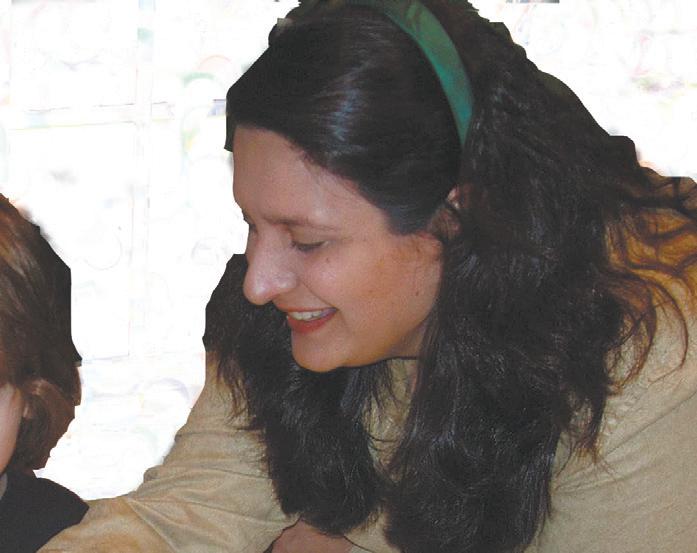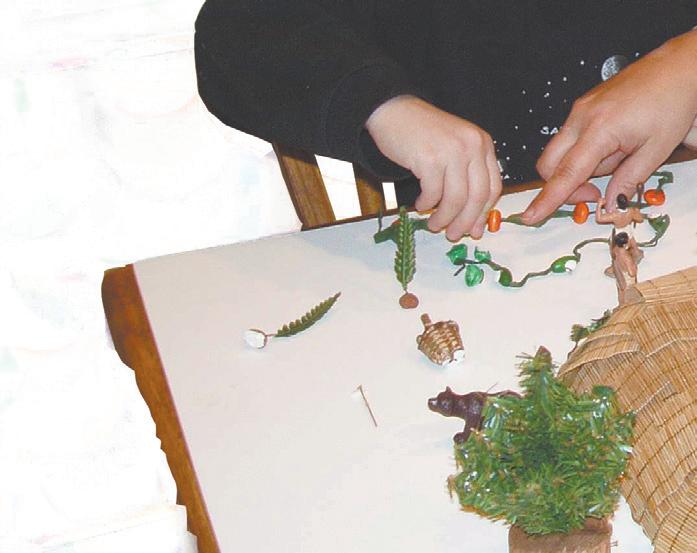

THE R ECORD


Did homeschoolers save us?
How the 21st century was won by committed home educators - mainly mums -




Myaree’s little miracle
Small parish unveils brand new Church, revealing dynamic will to grow and be a centre for knowing God

New nuncio for Australia
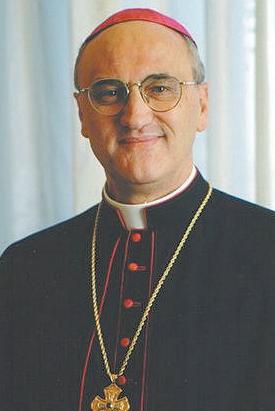 ■ By Anthony Barich
■ By Anthony Barich
Pope Benedict XVI has appointed Italian Archbishop Giuseppe Lazzarotto (pictured) as the new Apostolic Nuncio to Australia. The announcement was made shortly before Christmas after former Australian nuncio US-born Archbishop Ambrose De Paoli died on October 10 in Florida.
THE INCORRUPTIBLES
It’s an inexplicable phenomenon, but possibly a sign of things to come. Why is it that when some people die their bodies remain incorrupt - for centuries?
Page 8

Archbishop Lazzarotto, 68, was ordained to the priesthood in 1967 and entered the Diplomatic Service of the Holy See in 1971 and has served in nunciatures throughout Africa, the European Community, Israel, Cyprus and in the Secretariat of State at the Vatican. In 1994 he was appointed Apostolic Nuncio to Iraq and Jordan before being appointed Nuncio to Ireland in 2000.
WE NEED QUIET
Judge sentences priest to pray
A double-parking priest who lacked the funds to pay a fine has been ordered to recite seven Psalms per day as punishment for traffic violations.
Chilean priest Fr Jose Cornejo faced a 50,000 peso ($115.50 AUS) fine when he illegally parked in front of a school where he works in Puerto Montt in the south of Chile.
Judge Manuel Perez had a different idea.
“This is not a sentence that has just occurred to me,” he told the Chilean daily
ARCHBISHOP BARRY HICKEY reflects on a recent visit to the goldfields, and what he discovered on a long train trip as he read his breviary.
Page 9

La Tercera. “I did it as a tribute to Galileo Galilei, one of the greatest scientists of all time, who received a similar sentence from the Catholic Church during three years for saying the earth rotates around the sun. He will have to recite seven Psalms from a book in the Old Testament. The Priest will recite the seven Psalms every day for three months.
On the judge’s orders a court official who lives near the priest will visit him daily to make sure the sentence is being carried out.










21 martyrs in violent deaths
Twenty-one people involved in ministry suffered violent deaths in 2007, including a priest and three deacons in Iraq.
The Fides news agency, of the Vatican Congregation for the Evangelisation of Peoples, released the list of names of the dead today. The group includes mostly priests and deacons. One seminarian, a brother and a woman religious are also included.
“In recent years our list has included not only the names of missionaries ‘ad gentes’ in the strict sense, but all pastoral workers who died a violent death, sacrificing their lives, aware of the risk they were taking by preferring to remain at their posts, rather than give up their commitment to Christian witness and charity,” the news agency clarified.
Bishop of Sale resigns
The Bishop of Sale in Victoria, Bishop Jeremiah Coffey, has resigned on reaching retirement age. The acceptance of his resignation was announced in Rome on January 2. The Irishborn Bishop Coffey had been in charge of the Sale diocese since 1989.
His successor as bishop, who has not yet been named, will be expected to deal with the possible return of a one-time priest of the diocese, Fr John Speekman, who was removed from his tenure as parish priest of Morwell after a dispute over Catholic school education. Fr Speekman’s removal has been the subject of an ongoing appeal process at the Vatican.
Don’t obsess on climate: Pell
Cardinal George Pell said Christians should look into their own hearts and families, rather than obsessing about distant issues like global warming. In an interview for the Ignatius Press magazine Catholic World Report, Cardinal Pell expressed skepticism about what he called extravagant claims of impending man-made climatic catastrophes.
“Years ago, I was struck by the fears middle class kids with no religion had about nuclear war. It’s almost as though people without religion, who don’t belong to any of the great religious traditions, have got to be frightened of something.” The Cardinal said that in the past pagans sacrificed animals and even humans in vain attempts to placate capricious and cruel gods. Today they demand a reduction in carbon dioxide emissions.”
The global good Samaritan

Late last year former Caritas Internationalis Secretary General, Duncan Maclaren challenged the people of Western Australia to be ‘Good Samaritans’ in the 21st century. He spoke to people in Perth, Bunbury and Busselton and to Record reporter Sylvia Defendi on the evolving nature of one of the world’s largest aid networks.
As secretary general of a confederation of 162 Catholic aid and development agencies, that is Caritas Internationalis (CI), Duncan Maclaren has seen it all.
town. Duncan, along with his parents sent his pen pal a box of resources – canned food, school equipment and the likes.
These days Duncan reflects on that experience, which first got him interested in aid and development, as only a part of what was necessary in assisting his needy friend.
“Any form of intervention in people’s lives is extremely complex, especially when you are working with vulnerable people.
“Caritas is part of a huge network that ensures that the poorest are cared for, that aid is given and that above all the dignity of those we help is maintained,” he now says after years of experience.
It is surprisingly easy, he says, to create more harm than peace in a place that has experienced trauma.
the UN on a grass roots and international level,” he describes.
CI also called for an adequate analysis of poverty during Duncan’s term, when it realised that most of those exiting poverty did so with a little education and money. In Duncan’s words, these were not the poorest of the poor.
But he also believes that for the first time in history this type of poverty could actually be eradicated.
And the answer, according to Duncan, does not lie in generosity – “People are very generous and CI’s income continues to grow,” he explained.


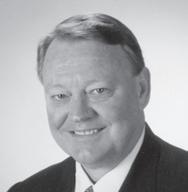
He has seen the kind of poverty that strips a person of their humanity, he has seen individual generosity grow worldwide and has seen nations pledge, only to decide tax breaks were a more efficient use of the country’s budget.
Yet the Scottish crusader for the world’s poor is also quick to correct that resolving the global issue of poverty is far beyond that of establishing economic goals.
He has seen first hand that creating a ‘Robin Hood’ scenario - where funds are shifted from those who have some to spare, to those less fortunate – only helps so much.
“We have to look at our work through the lens of social justice, we have to look at development through the eyes of those needing development and we need to take a holistic approach to such development,” he said.
During an interview, he recalled the day one of his childhood pen pals, who lived in Samoa, wrote to him describing the aftermath of an earthquake on the home-
Asked what he thought was the highlight of his period of governance, Duncan said he was delighted that the work on peace building and reconciliation, which began under his watch, was now central to the confederation; “so that whatever we do, we create peace,” he added.
Under Duncan’s guidance, CI’s peace work and reconciliation development projects involved the training of 4000 people world-wide to implement peacebuilding techniques.
“Traumatised people may sign a peace treaty but they have created a totally different atmosphere in a place that has suffered much hostility and that is why we need trained people to work with them in establishing peace,” he said.
Alongside his peace-building efforts, Duncan was at the forefront of those seeking better advocacy for the poorest of the poor.
Under Duncan’s watch, CI improved advocacy at the UN level, by providing a wealth of information from those working on the ground level. “We are one of the few organisations that are present at
Rather, advocacy is lacking. “People need to stand up and say that these global issues are far more important than tax breaks,” Duncan said.
Indeed, Tony Blair’s message before resigning mentioned that one of the important reasons why the G8 gave towards reducing debt was due to mounting pressure from organisations like CI.
After almost eight years heading CI, Duncan can only be described as a modern day ‘Good Samaritan,’ who illustrates the core mission of CI as one that shows the love of Christ to others.
One of his favourite memories from his governing role occurred during the cleanup after the 2003 earthquake in Iran, when a Muslim woman, who had been assisted by a CI worker asked for a Bible, so that she could understand what inspired the aid worker to live with such love for others.
For more information on Caritas at a local and even national level within Australia, call: 9422 7925.
A plea for God’s help changed atheist’s life
A daughter of Protestant ministers makes an intellectual journey from being an atheist to not only believing in God but finding substance in living and teaching the Catholic faith.
■ By Henrietta GomesHer parents are both ordained ministers at Disciples of Christ Church in Atlanta and her sister recently entered seminary to become a Protestant minister.
So, for Tiffany Lambert, director of religious education at All Saints Parish in Manassas, it “creates a funny situation,” she said with a mischievous grin.
Service to the Church, however, was not always the centre of Lambert’s life. As a youth she fell away from her Protestant upbringing, and playing competitive soccer became the core of who she was.
“As I continued playing soccer, it took over my life. Soccer was my sense of security. It was my anchor,” said Lambert, who studied at Clemson University on a soccer scholarship.
“By high school, I really didn’t believe in God.”
It was a combination of her “soccer god” and seeing suffering in the world that propelled her to turn away from the faith of her parents.
Desire to know God
Growing up in downtown Atlanta, Lambert was exposed to homelessness, and she often spoke with those she encountered on the streets and brought them food.
She could not grasp the world’s idea that somehow she was more valuable than the people on the streets.
“It’s not fair that someone’s valued more because of what they can do,” she said. Knowing her struggle with believing in God, her friend gave her a copy of C.S. Lewis’ “Mere Christianity.”
Although Lambert found the author’s arguments convincing and compelling, she “could not get over my initial atheism. I had this all straight in my head, but couldn’t know in my gut.”
As Divine Providence would have it, Lambert attended a Catholic high school and had the opportunity to ask questions of her campus ministers.
“I kept getting good answers, but it really became more and more painful. The more

proclaimed her new found belief and “rediscovered creation.”
She began to meet with other Christians who would teach her to read Scripture and pray. That faith sustained her when a benign spinal cord tumour, she had been diagnosed with in high school returned.
She was forced to leave college for a semester and return to Atlanta for an operation and radiation. “My soccer god that I had been developing was taken away through the surgery,” she said.
The time off from school gave her time to “determine (in) which denomination she would be baptised.” Her search began. She opened up the Encyclopedia Britannica and read through every Christian denomination she could find.
As the encyclopedias failed to satiate her appetite, Lambert headed to the main sources. She began reading the Church Fathers. “The more I read the more I realised these guys believe the same things the Catholic Church believes. I was stunned.” Immersing herself in reading the Catechism, Lambert slowly came to understand the magisterium, the teaching authority of the Church. “It didn’t squelch my questioning.
“It gave me tools to ask more questions,” said Lambert, who is surrounded in her office by hundreds of books on theology and catechetics.
this totally different perspective that’s so simple. It’s so refreshing because they just want to know the truth. They accept it and it makes sense to them. I don’t have to bring in 15 copies of Encyclopedia Britannica. It doesn’t have to be this complicated song and dance. I love that part of my job,” said Lambert as she adjusted the silver ring with crosses she wears on her left hand as a reminder of her baptism and commitment to Christ.
“I dip it in the holy water and make the sign of the cross,” she explained. It reminds her of her baptism.
Common ground with family
Although her family was excited that she was professing her faith in Christ, “It was somewhat bittersweet for them.” Now, several years later, “they are more comfortable,” she said.
“It’s important to me to live to share what I have in common. I love singing hymns and I love hearing their pastor preach from the Scripture.”
When visiting her family in Atlanta, she goes to church with them, but also attends Mass, and her family sometimes joins her.
Her father playfully calls her “Torquemada,” one of the Dominicans who headed the Spanish Inquisition.
I sought to know whether God existed, the more this yearning in my heart developed to know Him, yet it went unfulfilled,” Lambert said.
Sitting in her office, where the walls are decorated with religious icons from Rome and Medjugorje, she said, “It was as if God was carving out this cavern in order to fill it once I knew Him.”
Her intellectual journey gave her all the answers she sought, but regardless of the many books she read, she “couldn’t make the jump.”
Moment of grace
It was a Sunday morning during the first semester of her freshman year in college when she had a change of heart. Lying face down on her bed crying, she said, “God, if you’re here, can’t you help?”
Her eyes widened as she recounted the story.
“It was a moment of grace,” she said excitedly. “I knew that God was real.” She finally felt it in her heart. “I was given the gift of faith,” she said.
She left her dorm and walked outside. “There’s someone who designed these trees, they’re not random,” she said out loud as she
Thrilled with her discovery, she enrolled in the catechumenate program, and the following Easter, was baptised and came into full communion with the Church.
Water saved in a jar
She played soccer at Clemson for another season upon her return, but because of her health could not continue. Although it was “heartbreaking” to let go of soccer, she knew that her “cavern” was being filled.
While professing the “I do’s” during her baptism and initiation into the Church, “I became overwhelmed with tears. That’s what I imagine making wedding vows would be like,” she said.
“I felt in a very personal way, Christ was asking me those questions as the Bridegroom,” she said. “It was a very real moment of public, but personal prayer.” In her home, she has her baptism water saved in a jar.
“The fact that you can have water that’s holy is cool. When I see holy water come out at Mass, I get so excited because I think back to that moment (of baptism).” It is that same excitement she tries to instill in the 1,000 children in the parish religious education program.
“I love the way kids see things. They have
She also noted that her family often comes to the defence of the Catholic Church when questioned.
Despite the playful banter she has with her family about the differences in faith, she said, “we’ve accepted the reality. But we have a lot in common. We pursue what we have in common.” After graduating from Clemson, Lambert went to Franciscan University of Steubenville in Ohio to pursue a master’s degree in theology.
Now, along with her responsibilities as director of religious education, she is a doctoral student at the Dominican House of Studies in Washington, DC. Lambert refers to her “need to grow in holiness,” when speaking about any challenge in her ministry.
Working with children reminds her that, “we are all called into Sonship and being simple children.” At the end of the day, she enjoys the “humility of being a student.”
Though she does not always have the answer, she is “willing to sit back and listen to the Church. That paradigm makes sense to me.”
Her desire for herself and her family is that “each of us grow closer to Christ.” She admits, however, “It’s kind of funny once you see the picture of all of it.”
-Arlington Catholic Herald

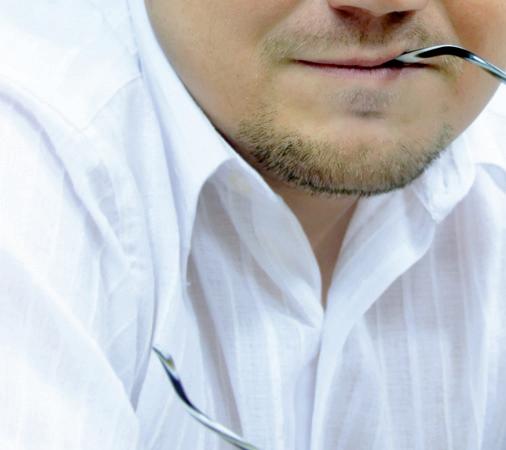
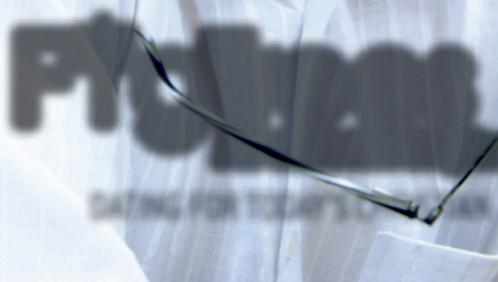

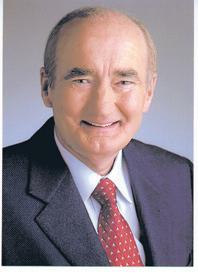
I’m John Hughes, WA’s most trusted car dealer
Is it true that when people come to do business with me, they will be treated with courtesy, sincerity, professionalism and efficiency?
Is it true that “I want your business and I’m prepared to pay for it” and “I stand behind every car I sell”.
Is it true that I have over 40 technicians who are dedicated to getting my used cars in first class condition before sale?
Is it true that most of my sales are not from direct advertising but personal recommendation, repeat business and reputation?
Is it true I have my own finance company to assist good people with poor credit to buy cars from me?











Is it true I sell over 1,300 vehicles every month in Victoria Park and that is the biggest number from any one location in Australia?
Is it true that I have a warehouse selling cars under $10,000 and that I offer a full money back guarantee within one week?
The power is yours
■ By Anthony BarichThis year’s Flame Ministries International Congress is set to empower youth from on High as the Apostles were at Pentecost so they can take World Youth Day by the horns and run with it, says FMI leader Eddie Russell.
The Congress, on January 1720 at John XXIII College, is called “Arise: A trumpet call for a Joshua Generation”, named after Joshua, who was a boy when Moses led the Jews out of Egypt.
They wandered for 40 years before reaching Israel, the promised land, in a trip that should have taken a couple of weeks.
Born in Egypt during the Israelite enslavement, Joshua succeeded Moses after accompanying him part of the way up Mount Sinai to receive the Ten Commandments. Joshua subsequently commanded the conquest of Canaan.
With this in mind, FMI’s Congress wants to give birth to a new generation of courageous witnesses of Christ empowered by the Holy Spirit to establish the Kingdom of God, though we live “in a dark world of anti-Christian values”.
Mr Russell believes this is what Pope Benedict XVI had in mind judging by the WYD08 theme from Acts 1:8: “You will receive power when the Holy Spirit comes upon you, and you will be my witnesses…

give that. Let’s face it, without the power of the Holy Spirit active in our lives on an experiential level, we are pretty weak.
“We find ourselves theologising why we do not see the great works today that Jesus said would happen for those that believe.
“But, even in these anti-Christian times, 2008 can be a year of revival and of young Australians coming into their divine inheritance that FMI has preached throughout 2007.
“The kingdom and the power be theirs if they only accept that which God has granted them through their very baptism.”
The Congress is open to people of all ages, though older generations have generally frequented the Congress in the past. He has addressed Catholic Charismatic Renewal leaders in Rome and the United States about the age of most people in the charismatic movemnet, but he is confident it has something for today’s youth.
More clergy changes in the Archdiocese
■ By Sylvia Defendi
Archbishop Barry Hickey has announced further changes to the Archdiocesan structure.
The first Ad Clerum (letter to clergy) for 2008 announced that recently ordained priests Frs Arnel Taracina and George James will begin their priestly ministry this year as assistant priests at St Gerard’s in Mirrabooka and St Thomas More in Bateman respectively.
Meanwhile, Jesuit Father Theo Overberg has been appointed parish priest of Holy Rosary, in Nedlands.
coordinator of the Camillian hospital ministry, Fr Sean Bredin OS Cam this year as well as Fr Alfonsas Savickis, who was chaplain to the Aboriginal Ministry.
Fr Savickis will continue as parish priest of St Brigid’s, in Northbridge.
Taking over Aboriginal Ministry will be Fr Emil Ciecierega SDS, who is currently parish priest at La Grange (Bidyadanga).
to the ends of the earth”. These were Jesus’ last words on earth before ascending to the Father.
“I am sure the Pope wants to see Australia’s youth empowered from on High as the Apostles were at Pentecost, and not just have a shallow high and go home and do the same old stuff day to day while trying to think what to do next,” Eddie said.
“They need a vision, and the Joshua Generation Congress can
“God loves the new born and the one on death’s door just as much as those in between; He wants them all set free and empowered for the Kingdom coming; it is His eternal plan and needed more today than any other era,” Eddie said.
Perth’s Archbishop Barry Hickey will address the Congress, as he did last year to a rousing applause, along with UK evangelist Derek Williams, American Scott Kaldahl and local boy David Harp, whose life was physically transformed from drug addiction by faith in God.
Fr Clayton Mitchell, formerly an assistant priest at Bateman, has been appointed parish priest of St Paul’s in Mt Lawley, while Fr Albert Saminedi, currently priest-in-charge of St Peter’s in Bedford, has been appointed its parish priest.
Mirrabooka’s Fr Francisco Mascarenhas has been appointed parish priest of Santa Clara’s in Bentley and Fr Giosue Marini, currently assistant priest at Mirrabooka, has been promoted to parish priest.
The Archdiocese will farewell former parish priest of St Aloysius’ in Shenton Park and
Fr Tiziano Bogoni, currently chaplain at St Vincent’s Nursing House in Guildford, has been appointed chaplain to All Saints City Chapel and will also be responsible for the pastoral care of the Mount Hospital.
Awaiting the arrival of the Indian Vincentian Community, Fr Benedict Lee, currently assistant priest at Whitfordw, will be acting parish priest in Shenton Park, while Fr Douglas Rowe, currently chaplain to All Saints City Chapel, will reside in a community house in Midland, to prepare for the arrival of the Patrist Community from the Philippines.
Fr Luis Tijerino, currently assistant priest at Cottesloe, has been released to be an Itinerant for the Neo-Catechumenal Way, and will be spending some time in Balgo to assist Fr Eugenio Zurias Dias.
The King brings peace






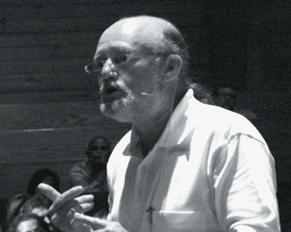

 ■ By Shirley Fontanini
■ By Shirley Fontanini
The residents of the peaceful haven of Pemberton are becoming accustomed to the joyous and reverent Christ the King procession when it makes its way up the hill from the Sacred Heart Church.
The third annual event, held on November 25 last year, was attended by over 70 participants, including many children who had received the Sacraments of Holy Communion, Reconciliation and Confirmation throughout the year.
The procession, led by Fr Pat Rooney carrying the Blessed Sacrament, commenced after Mass and included music and singing as parishioners made the steep climb to the Holy Spirit of Freedom (HSOF) Community’s spiritual base, Karriholm, God’s Sanctuary.
had met and were praising and worshiping God together.
On Sunday afternoon, following the procession, participants processed to the cross in the gardens of Karriholm. In a symbolic gesture each person was encouraged to identify any burdens that may have been weighing heavily upon them and hindering their relationship with God or with one another and write them on a small stone.
These stones were then placed at the foot of the cross.
This was followed by a reverent time of prayer in which the group reflected in silence.
One person shared that they felt that a spirit of peace had descend upon the group and upon Karriholm.
This reminded another that the beautiful rose bush planted near the cross, a gift given to Karriholm by the Sacred Heart Parish on its twentieth anniversary in 2005, had been named the Spirit of Peace rose.








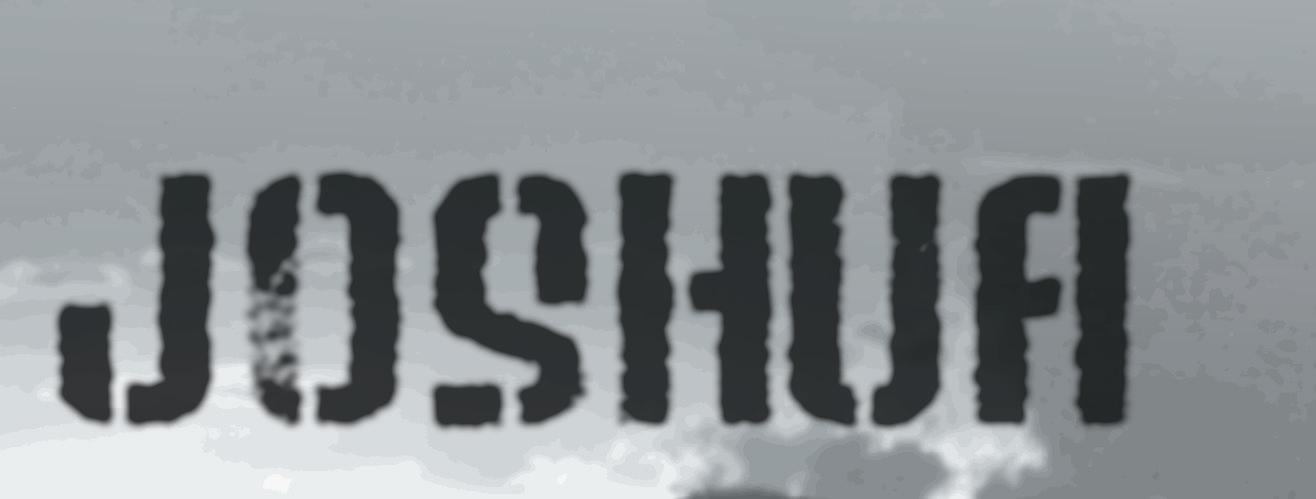



Benediction and the Blessing of the Sick followed and parishioners and visitors then enjoyed lunch and a time of fellowship.

In preparation for the event the HSOF Community had held a retreat on the previous day, which included Mass, Praise and Worship, inspiring talks and a very gentle reflection based on “The Lord Is My Shepherd”. Participants were reminded how God is always with them and is calling them to lay down their burdens and follow Him.
There was a very strong sense of God’s presence, particularly on Saturday evening, as participants gathered before the Blessed Sacrament in Adoration and worshipped with song.
A participant commented that it was as though Heaven and Earth
The day finished with a time of Praise and Thanksgiving to God for the love, peace, healing and restoration that had been received over the weekend.
It was envisaged some years ago that Karriholm would become a place of healing through the presence of Jesus in the Blessed Sacrament.
The annual Christ the King processions and Retreats seem to be confirming this vision.
It seems that all those who come to Karriholm, whether it be for a day, a week or a month, leave with a sense of having been in a very special place, a place of peace, a place where they can experience the presence and love of God.
For further information on Karriholm contact 9776 1734.
The little church that changed lives
Regina Coeli Catholic Church in Brentwood was filled to overflowing as the community celebrated the little church’s 50th anniversary in midDecember.
With a congregation of over 140 people, Bishop Donald Sproxton concelebrated the Golden Jubilee Mass with seven priests who had served the Parish over its 50 years.
Many of those in attendance were past parishioners. Prior to the Mass John Trainor, a current parishioner, spoke of what the church has meant to so many people over its years and he shared his memories of attending church in his youth including the memory of attending there because the then priest said the Mass in pretty quick time‚ also because it was 7pm Mass, one of the last Sunday Masses available each Sunday.
Some of the past priests also shared their Brentwood reminiscences.
Fr Pat Cunningham told how he picked up a man outside St Benedict’s in Applecross who had missed Mass there.
He took him with him to Reid’s home in Brentwood where Mass was said each Sunday before the Church was built in 1957.
After Mass he dropped him back at the Majestic Hotel in Applecross. Next day as Father went to lunch at the same hotel with Father Albert Lynch, St Benedict’s Parish Priest
he learned that the keen Mass goer, along with an accomplice, had robbed the Ozone Hotel in Perth the day before.
Father remembered the robber’s comment, “Too many Catholics don’t make an effort to go to Sunday Mass.”
Fr Richard Doyle remembered the Brentwood Church as a place of warmth and caring where everyone pitched in and worked together.
He also remembered how he was told by the lay music leader Michael Reutens, to turn his lapel microphone off during the first hymn to ensure that the congregation could stay in tune. Father indicated he would do so but would then use the voice that God had given him in later hymns.
Bishop Sproxton in his homily indicated that Advent was a time of preparation for the coming of the birth of Christ.
He also said we build buildings (churches), so that communities can come together to share their faith and prepare for the future. Regina Coeli was one of these special places.
After the Mass Fr Peter Whitely, the current parish priest, cut the Golden Jubilee celebratory cake and morning tea was served in a large marque erected in the grounds.
It is anticipated that Regina Coeli Church will close as a Mass centre when the new St Benedict’s Church in Ardross St is completed next month.





Thank you, Father, for this gift
 ■ By Anthony Barich
■ By Anthony Barich
Miracles come in various forms, but when Archbishop Barry Hickey dedicated Myaree parish’s new Pater Noster Church on December 23, he knew this was one the locals will be talking about for quite some time.
As parish priest Fr Larry Reitmeyer said, the fact that the church exists is a credit to the openness and foresight of the Archbishop to support the people who wanted a new church.
Ron Powell, an acolyte at Myaree for 20 years, told The Record it was widely held that as soon as longserving Fr Laurence Formosa died, the parish consisting of “mostly older people” would go as well, because then-Archbishop of Perth William Foley would not be able to source a priest to replace him.
“We used to talk about how there won’t be a church if Fr Formosa goes – we’ll have to pack up and go somewhere else,” recalled Mr Powell. But when Fr Formosa did die in the early 1990s Myaree parish did not also die.
This was in part thanks to an enthusiastic Pallotine Father Michael Gitner, who held the fort until a permanent replacement came in the form of Fr Reitmeyer, who Archbishop Hickey had personally ordained in 1989 over in
New Mexico, USA for the diocese of Geraldton when still Bishop of Geraldton.
When Fr Reitmeyer arrived in February 2002, the parish council brought the issue up again, and the parish priest approached his old friend, now-Archbishop Hickey, who was receptive to the idea, despite opposition from some quarters who believed that the parish should have been closed years ago.
Fr Reitmeyer says the influence of the Archbishop in getting Pater Noster built cannot be overstressed.
“He was very much a shepherd,” Fr Reitmeyer said of the Archbishop, who granted permission to build the church after extensive research into whether the parish could afford the repayments.
To cover the roughly $1.8 million costs, parishioners basically quadrupled their Planned Giving in the Second Collection at Mass, and by the time Archbishop Hickey dedicated the church on December 23 they had paid half of it off.
The name Pater Noster, Latin for “Our Father”, is a change from Corpus Christi, and arose because for five years parishioners prayed an additional Our Father just before the final blessing at each Mass for the success of the new church.
When it was finally dedicated and its altar consecrated by Archbishop Hickey, the first Mass was concelebrated by Auxiliary Bishop Donald Sproxton, Fr Joseph Lee (who was a deacon at


Myaree when they started praying the extra Our Father), Chinese Catholic Community chaplain Fr Dominic Su and Frs Tim Foster and Edward Miller, all good friends of Fr Reitmeyer, who had worked with refugees at Port Hedland and had studied in Taiwan.
As per Fr Reitmeyer’s instructions, it is a simple church that holds up to 400 and is conducive to prayer, based on Mymaki Church in Vantaa, Finland, in the Helsinki region. Fr Reitmeyer saw an image of the Finland church in a book called European Church Architecture.
Pater Noster is completely soundproofed from the busy Marmion Street it sits on, and a first-class relic of the True Cross – which Fr Reitmeyer bought off E-bay from a “very reputable dealer” - is encased on an altar at the back of the church.
Three simple but effective mosaics constitute three important parts of the Church. The main central mosaic behind the altar portrays Jesus basking in rays of white light that represent God the Father, with the words, “Father, Holy Is Your Name” on it.
To the right of the altar for the congregation is a smaller blue mosaic that is the double-sided Tabernacle, on the other side of which is an Adoration chapel, which can be accessed 24 hours a day if parishioners know the combination to unlock the door. The Blessed
Sacrament can be exposed in the chapel by simply opening two small doors. Another blue mosaic to the left of the altar constitutes the baptismal font, with an image of a dove representing the Holy Spirit on it.
The top of the altar itself is another blue mosaic, with IHS – the symbol of Christ – in the centre, and images of grapes (wine) and bread on either side: again, simple, but effective.
The Stations of the Cross are also simplistic silhouettes from the old “church”, with the plaques taken off.
Fr Paul Fox will use the furniture from the old church, which was basically a converted classroom, for his country parish.
Darrel Oswald, a three-time parish councillor who has been at the parish since 1969, recalled to The Record that under Fr Formosa, the parish council had approached Archbishop Foley for permission to build a new church.
This was denied, but he did grant permission to build extensions once it became clear that the parish was outgrowing the old church which could only hold about 140.
A decent altar setting was installed according to the designs of Fr Formosa, who was also something of an architect.
Still, Myaree Corpus Christi parish school had been virtually operating in the same building for 20 years – for a while there was a partition separating the classrooms
and place for worship. “The new building itself is magnificent – I’ve never seen anything like it,” Mr Oswald says.
“The very fact that we’ve got it is amazing – I still can’t believe it.”
Mr Oswald told The Record that Fr Reitmeyer has done a “remarkable job: to get the church off the ground. “He checked on the progress regularly to see they’re doing the right thing,” Mr Oswald said. “He’s a remarkable man in many ways.
“We waited 40-odd years for this church. The school really did need a proper church, and I’m looking forward to seeing school Masses in the coming years, and the kids filling it.”
The school adjacent to the church is now part of Mel Maria Primary School, and Mr Oswald says that the new church has already brought back many young families to the parish.
Mr Oswald said that Fr Formosa, a stoic Maltese priest who vowed to retire “when he dies”, would have had the new church built himself but suffered illness towards the end of his life.
He said that Fr Formosa, a fascinating character who had a hobby collecting clocks, had a great devotion to Our Lady.
Mr Oswald said that when Fr Formosa was in hospital just before he died, he reportedly told a visiting female parishioner, “I must go, Our Lady is waiting for me.”
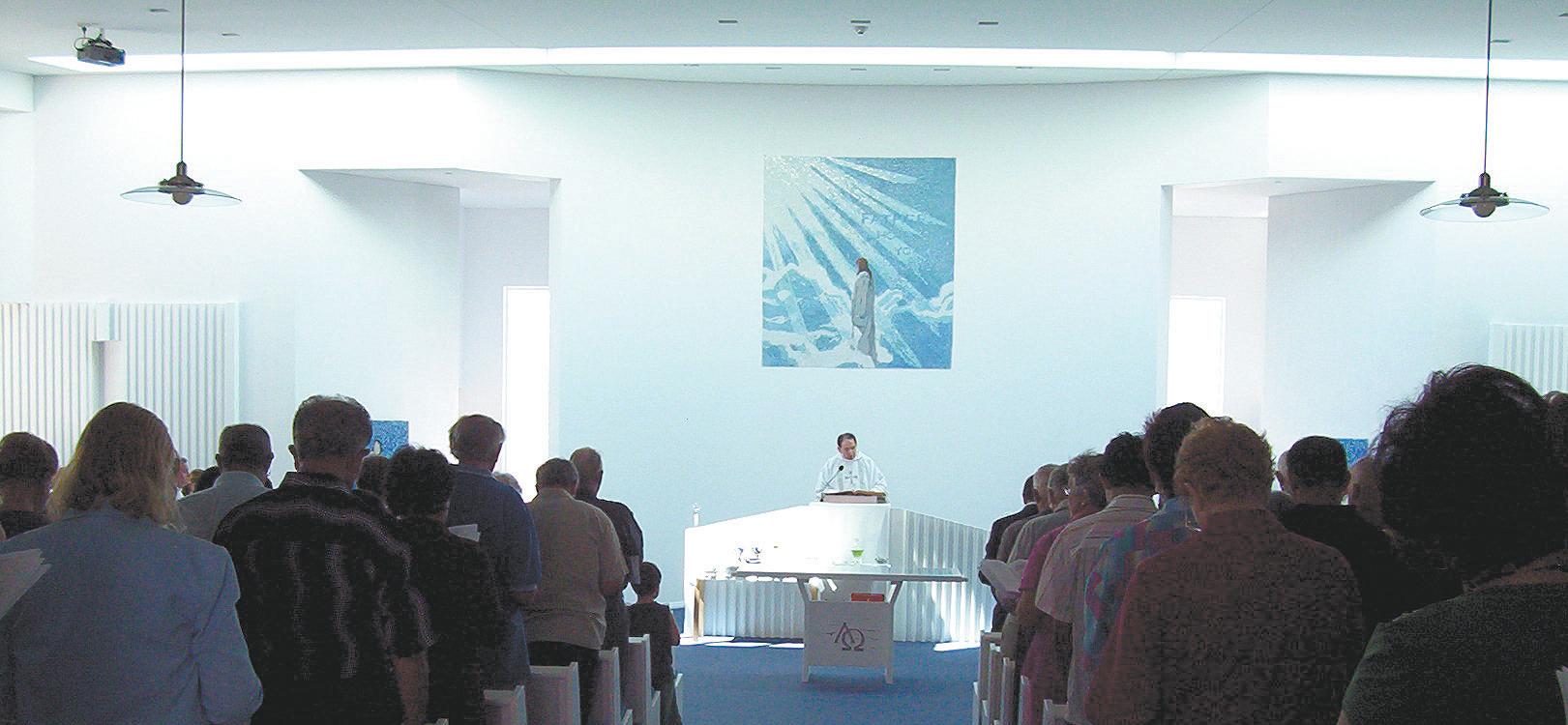
Troubled people need prayer: prelate

The former President of the Australian Catholic Bishops Conference has returned from a Church Heads tour of the Holy Land urging Australians to support Christians in Palestine and Israel.
■ By Paul GrayArchbishop Francis Carroll, representing Archbishop Philip Wilson as head of the bishops’ conference, participated in the visit to Israel and Palestine in the company of highranking leaders from all of the main Christian churches in Australia.
Voicing the thoughts of Christian leaders from Jerusalem whom he met during the visit, Archbishop Carroll told The Record that international influence – from people like Australians – represents the best chance for a just and lasting peace in the Holy Land.
“They want us to have a much more urgent sense of prayer, and a more active interest in the people living in the Holy Land,” he said.
Christians in the Holy Land also want their fellow Christians from abroad to come on pilgrimage and to support specific aid projects to help the people of Palestine.
The high-ranking delegation to the Holy Land also included the Anglican Primate of Australia, Archbishop Philip Aspinall, the President of the Uniting Church in Australia, Rev’d Gregor Henderson and representatives of the Baptist Union, Churches of Christ, the Society of Friends and the National Council of Churches.
Archbishop Carroll said the Australian church leaders travelled widely in the Holy Land, visiting Hebron, Ramallah and Bethlehem as well as Jerusalem.
One of the features of travelling throughout the visit was the large number of military checkpoints encountered by the delegates.
The constant need to pass through checkpoints is “complicated and distressing”, especially for Palestinians who live with this every day, he said.
“Everywhere there were armed soldiers,” Archbishop Carroll said.
“Most of them looked like young kids. They seemed to be married to their rifles.”
The former Canberra-Goulburn Archbishop said one of the more inspiring things about the visit was meeting Israeli groups who were working to soften the influence of Israeli Government policy on the Palestinians.
A group called Rabbis for Peace is actively promoting justice for the Palestinians, he said.
The Australians also met Israeli women who go to the checkpoints to monitor them and by their presence hopefully prevent abuses from occurring.
Archbishop Carrol said that the delegation met a group of soldiers who called themselves, ‘Breaking the Silence’, who told of their experiences.
“They say that as soldiers, what they are doing dehumanises all concerned,” the Archbishop said, and described these former Israeli soldiers as “very brave” because of what they are doing in speaking out.
Asked to comment on public opinion in Israel on the Palestinian question, the Archbishop said many Israelis believe that no Israeli is allowed to go into Palestinian ter-
ritory. This reflects the wall-like separation that exists between the two peoples. “The ordinary people on both sides have no chance of meeting together,” he said.
The Australian delegation met with Christian leaders in Jerusalem. There were 12 or 13 Christian groups represented at the meeting, every one whom expressed gratitude to the Australians for coming to the country and listening to their message, the Archbishop said.
“The Jerusalem church leaders feel that international influence is the only chance for a just and lasting peace,” Archbishop Carroll said.
The delegation met “quite a few” Muslim people as well. They also had a meeting with the chief-ofstaff of the Palestinian Authority.
These face-to-face meetings revealed a surprising degree of behind-the-scenes, inter-religious co-operation.
“Everywhere we went we heard about the co-operation between Christians and Muslims,” Archbishop Carroll said.
However, a major concern for Archbishop Carroll is the fact that many resident Christians are leaving the Holy Land.
“People say this is because of the Muslims, but that is totally contradicted by our experience.”
In fact, he said, “the departure of people is caused by the lack of opportunity, by economic reasons, because of the limitations on the Palestinian economy imposed by Israel.”
Unless Israel stops imposing restrictions on the economy, the situation will not improve, Archbishop Carroll said.
Following their visit, the Australian church leaders intend to continue making representations to the Australian Government for more support, and to work harder
to influence relations between Israel and the Palestinians.
Archbishop Carroll said he found the situation in the Holy Land at times to be “very depressing.”
He commented on the concrete barrier between Israeli and Palestinian territory which has been erected by the Israeli Government to prevent terrorist infiltration.
“The Wall is a great, shocking blot on the landscape,” Archbishop Carroll said.
“The wall is built well into Palestinian territory. It’s taken land from the Palestinians. When you’re there, it’s very much in your face,” he said.
But on the other hand, said Archbishop Carroll, Australians must understand the “real fear” among Israelis of terrorism arising from the Palestinian side.
Archbishop Carroll referred to Israeli settlements along the barrier as “settlements designed to last 100 years.” He said there is constant surveillance everywhere in the area.
“All of that is very depressing. On the other hand, the fact that negotiations have been renewed between Israel and the Palestinians is an encouraging sign.
“There is greater international interest in the area. Even President Bush feels he should do more than he has been doing to improve things.”
Internally within Israel, Archbishop Carroll said he feels encouraged by the work of interreligious groups.
He believes religion can offer a way out of the conflict. “Christians are the honest brokers between Jews and Muslims.”
However the resolution of conflict depends ultimately on the politicians, he said.
Archbishop Carroll says he takes the same view as that of the
Christian leaders in Jerusalem. He maintains hope for peace partly because of his faith perspective. He maintains the belief that ultimately, God is in charge.
“The message to Australians which we received everywhere was an appeal for prayer.
“They want us to have a much more urgent sense of prayer, and a more active interest in the people living in the Holy Land.
“The great call was, please pray, pray, pray.”
Christian leaders in the Holy Land also appeal to their fellow Christians overseas to come on pilgrimages. Pilgrimages offer people the opportunity to come and visit and support their fellow Christians in need, he said.
Australians should also support specific projects designed to help the people of Palestine, the Archbishop said. He said the delegation visited one place where Australian churches had helped to set up water supplies for Palestinian people.
At the local level in Australia, he said efforts are in train to strengthen meetings and dialogue between Christians and Muslims and Jews.
In a joint statement issued from Bethlehem, the Australian church leaders had described the opportunity to visit the Holy Land as “a profound privilege.”
In this statement, the Australian Christian leaders said they recognised the complex nature of the Israeli-Palestinian conflict.
They said they had visited the Holocaust memorial at Yad Vashem and laid a wreath in memory of the victims of the Nazis’ attempt to exterminate all Jews.
“We heard of Israeli grief and pain resulting from violent attacks and continuing fear of terrorist activity,” they said.
The incorruptibles Saints’ lives give us a foretaste of heaven
The perfectly preserved bodies of the saints have fascinated and appalled people for centuries. Christopher Howse investigates the phenomenon.
It fell to the great despoiler of shrines and destroyer of monasteries Sir Thomas Legh, the king’s commissioner, to deface one of the most historic tombs of all, that of St Cuthbert in Durham Cathedral.
That was in 1539, which was 852 years after Cuthbert’s death. When the metal-smith had taken a great hammer and broken open the chest in which the saint lay, the commissioners found Cuthbert “lying whole, uncorrupt, with his face bare, and his beard as of a fortnight’s growth”.
The smith was troubled to find that in breaking the shrine open he had also broken the saint’s leg.
One of the commissioners called up to him to throw down the bones but he replied that he could not because they were kept together by sinews and skin. Legh went up to see if this was true, and turned to tell his fellow commissioner that “he was entire”.
With Cuthbert, fine Anglo-Saxon vestments placed in his coffin were preserved too, together with a beautifully written bound manuscript codex of St John’s Gospel, written specially to lie with the saint, now owned by Stonyhurst.
The pious intentions of those who buried Cuthbert and revered his relics contrast starkly with the brutal inconoclasm of Legh and his team. But what are we to make of Cuthbert’s body being found incorrupt?
The 16th-century iconoclast’s reluctant admission of his corporeal preservation echoes the delighted wonder on March 20, 698 when the monks of his community opened his tomb, 11 years after his death.
“They found his body entire, as if he were still alive, and his joints were still flexible, as if he were not dead, but sleeping,” writes St Bede in his Life of Cuthbert. “His clothes, also were still undecayed, and seemed to retain their original freshness and colour. When the brethren saw this, they were so astonished, that they could scarcely speak.”
This, then was a miracle, and became part of the cult of the saint, that is to say, his holiness recognised in practice by the faithful. Cuthbert was made a saint long before canonisation was brought under the central scrutiny of Rome.
But incorruption has been associated through the ages with saints who have attracted widespread devotion: St Edward the Confessor (died 1066), who still lies in Westminster Abbey; St Hugh of Lincoln (died 1200); St Catherine Laboure (died 1876); St Charbel Makhlouf (died 1898).
On its own, incorruption has no more significance than any other physical peculiarity in a dead body: a sweet odour, the exuding of oil.
Just as preternatural phenomena such as levitation or stigmata do not prove holiness in life, nor does incorruption in death.
Still, if a good man or woman with the reputation of holiness is found after years not to have corrupted, the pious faithful can see an analogy with the future state of the body after the general resurrection.
A rotten body is no sign of damnation; an incorrupt body is no proof of sainthood. But incorruption is the sort of thing one finds with a saint.
A saint’s body is no more a living saint than any corpse is a human being.
But from the earliest times, the relics of martyrs were revered, and the Mass was offered at their tombs.
For their dead bodies are tokens of future glory, when their souls will one day be united with their risen bodies. So incorruption is
important eschatologically – it looks towards the kingdom of God that is coming.
A rotten body is no sign of damnation; an incorrupt body is no proof of sainthood. But incorruption is the sort of thing one finds with a saint.
Just as celibacy makes sense only if you look towards the Kingdom to come, which relies on the promises of God, so incorrupt bodies hint at the fulfilment of those promises.
Something of this is explained in St Paul’s Epistle to the Corinthians (15:36,42). “That which thou sowest, thou sowest not that body that shall be, but bare grain,” he says. “So also is the resurrection of the dead. It is sown in corruption; it is raised imperishable.”
This text was adopted for the burial service in the Prayer Book of the Church of England, and bits are familiar from the libretto Handel’s Messiah: “The trumpet shall sound, and the dead shall be raised incorruptible, and we shall be changed.”
Such a present token of future incorruption was well appreciated in the Middle Ages. When King Edmund, shot dead in 869 by Viking arrows and beheaded, was to be reburied in a new church when peace came, so wrote the learned Abbo of Fleury, who heard the story from St Dunstan, “There was a great miracle: Edmund was as sound as when he was alive, with a clean body, and his neck, which previously was severed, was healed.
It was as if a red silken thread around his neck showed men how he was slain… Edmund lies thus uncorrupted down to the present day, awaiting resurrection and the eternal glory.”
Something of this is explained in St Paul’s Epistle to the Corinthians (15:36, 42). “That which thou sowest, thou sowest not that body that shall be, but bare grain,” he says. “So also is the resurrection of the dead. It is sown in corruption; it is raised imperishable.”
The belief did not go out with the Middle Ages. Newman appended a forceful defence of similar miracles to his autobiography, the Apologia.
He asserted that oil oozing from the tomb of St Walburga was certainly medicinal – he had some of it – and it might show itself to be miraculous.
Among Catholics there may sometimes be wishful thinking.
The body of St John Southworth, revered in Westminster Cathedral, was cut into pieces at his martrdom, buried in France, dug up in the 1920s and sewn together, and beneath a silver mask the skin of his face is said to be of a coppery hue, with whisps of a beard.
It is a relic, and the saint prays for us from heaven; but to call the body incorrupt stretches the concept beyond meaning.
In the past century, by a ghastly parody of devotion to the holy bodies of saints, the corpse of Lenin was done up with embalming unguents and kept on show in Red Square.
But without the promise of the resurrection, the effect is nothing but a sick replica in flesh of a waxworks show.
COURTESY OF THE


Phenomenal: The body of visionary St Bernadette of Lourdes is seen through a glass encasement at the convent where she died in 1879 in Nevers, France. The Virgin Mary appeared to the 14-year-old French peasant Marie Bernarde Soubirous at Lourdes, in 1858. Bernadette entered the convent at Nevers at age 22 and remained there until her death at age 35. Her feast is April 16. PHOTO: CNSJOANN S KEANE

St Zita, who died in 1271 and regarded herself as a servant of God rather than man, lies in the Basilica of San Frediano in Lucca, Italy. She was ill-treated by her fellow servants but continued to love those who wronged her.


Wonders: Left - The incorrupt heart of St John Vianney, patron of priests, is contained in a reliquary at Cure of Ars Church in Merrick, New York. Right - The saint himself, the Cure of Ars, died in 1859. Pope Pius X proposed him as a model to the parochial clergy.

a
HOW I PRAY
the Lord be with you...
The much-anticipated re-translation of the Mass as we have known it is set to change not just the Roman Missal itself, but hearts and minds as well,
reports Anthony Barich
Walking into St Peter’s Basilica, the internationally recognised landmark of the Vatican, it is understandable if one is struck with an overwhelming sense of awe. So many artists have strived through the centuries to represent the majesty of God in massive paintings, statues, altars and, of course, the Dome of the Basilica itself.
Walking through St Peter’s Square, one is surrounded by the saints of the Church, with the Twelve Apostles personally chosen by Jesus front and centre.
Archbishop Mark Coleridge of Canberra and Goulburn, a key figure in the re-translation of the Missal that has been underway in recent years and which is planned for release by 2009, likens the language of the Roman Missal to the effect of St Peter’s Basilica.
“The language of prayer in the Roman Missal is designed to make you feel a small part of a vast mystery - the mystery of God,” he says. “But small doesn’t mean insignificant; it wants to make you feel small but hugely significant precisely because you’re part of that mystery of God.
“St Peter’s embodies this catechesis - the truth of God and the human being in relation to God. In fact, the sense of the human being as insignificant or as nothing is exactly the opposite of the Catholic understanding of the mystery of divine grace.
“The language of the Roman Rite reinforces that: it invokes the divine majesty, and stresses that we are drawn into its mystery. It’s an affirmation of the human being made great by divine grace.”
This Catholic theology of grace, he says, comes from St Augustine. For Augustine, we’re poor sinners incapable of saving ourselves, yet God reaches into our nothingness and we become grand by the power of grace.
“It’s a paradox, but the language of Catholic faith often deals in paradox.”
Apart from having worked in the secretarial team of Pope John Paul II, the Archbishop chairs the Roman Missal Editorial Committee, the International Commission for the Preparation of an English-language Lectionary and the Australian Bishops’ Commission for Liturgy.
If the reports from those associated with the Vox Clara (clear voice) Commission - which John Paul II convened in 2002 to advise and assist the Vatican’s Congregation for

Divine Worship - are anything to go by, it will be excellent.
One such consultant is Chicagoborn Fr Timothy Deeter, the former Director of Liturgy and Music at Perth’s St Mary’s Cathedral who is now the Sydney Archdiocese’s Director of Liturgy.
He told The Record that the new Missal will be closer to the original
Latin without a “slavish fidelity” to it, and the scriptural references and therefore the theology of the Mass are more accurate.
Given that English-speaking Catholics have been reciting the Our Father, which uses the older “sacral” form of English - for decades without any problems while knowing exactly what the prayer
means, Fr Deeter doesn’t envisage many problems with moving to this style in more instances in the new translation.
What’s clear is that the English of the Mass is a different idiom from that used ‘on the street’.
There is a belief, Fr Deeter says, that English is an Anglo-Saxon language but it is actually a ‘Latinate’
language; up to 65 per cent of our words come directly or indirectly from Latin, via the Norman invasion of England.
From the outset of his pontificate John Paul II and many other key Church figures, including the present Pope Benedict XVI, had serious concerns about the implementation of the liturgical reforms of Vatican II.
In his address to the plenary assembly of the Congregation for Divine Worship and the Discipline of the Sacraments on September 21, 2001, Pope John Paul II strongly emphasised that faithful translation of liturgical books is of paramount importance. He also urged appropriate catechesis concerning popular devotions, which should always lead people to greater understanding of the Mass.
After the production of what has widely been considered an unsatisfactory and even inaccurate translation of the Missal released in 1973, the International Commission on English in the Liturgy (ICEL) completed in October last year its draft translations of the 2002 Roman Missal, the book of prayers used for Mass. The new translation is reportedly a significant development on the liturgy millions of Catholics have participated in around the world in recent decades, and is reportedly a much closer translation of the original Latin text.
The current 1973 translation, some critics suggest, fails to properly convey grammatical clauses of the Latin text, and has helped obscure the crucial unity of the Eucharistic sacrifice with that of Calvary, the central meaning of the Mass.
By keeping the language “sacral” in the translation from Latin to English, rather than in “street Latin”, the new Mass is intended to lift humankind up as God’s creation and offer Catholics a greater understanding of the Mass, and in doing so give the faithful a greater awareness of their own faith in their lives.
Not just tinkering
Archbishop Coleridge points out that the Missal project is not just a matter of tinkering with words; there are big theological issues involved.
● The Theology of God
He points out that in the Missal translations those of us brought up since the ‘70s have known, the very physical metaphors of God are translated in an abstract way, which makes God seem distant.
Long liturgical road will have be
■ By Anthony BarichIt’s been a long road to arrive at this point. Ever since the text of the Mass from the Roman Missal was first translated from Latin in 1973 following the Second Vatican Council, there have been rumblings that it’s too inclusive, theologically vague, oversimplified and even scripturally inaccurate.
Perth priest Fr Timothy Deeter, who was seconded by Cardinal George Pell in August 2006 to direct his Liturgy Office in Sydney and has been consulted in the translation process, says there are words and entire phrases in the current English version of the Roman Missal that were not in the original Latin.
Cardinal Francis Arinze, Prefect of the Congregation for Divine Worship and the Discipline of the Sacraments, has admitted that the Mass translation we currently have was rushed when it was done in the 1960s. “No one had experience on how to translate, neither this Congregation for Divine Worship, nor the bishops’ conferences, nor the experts they got together,” the Cardinal told British newspaper The Catholic Herald Rome ordered an overhaul of ICEL (the International Consultation on English in the Liturgy) and the Vatican created the Vox Clara (‘A Clear Voice’) Committee to advise the Congregation for Divine Worship and the Discipline of the Sacraments, the Vatican’s liturgical agency, on English translations.
And who’s chairing Vox Clara?
Cardinal George Pell, Archbishop of Sydney.
Created by the Second Vatican Council (1962-65) to translate liturgical texts into English, ICEL itself is a joint project of the 11 English-speaking bishops’ conferences, which have been asked to review the draft translation by March 2008.
The Cardinal is happy with the cur-
rent draft, and it is on track to be implemented by 2010, with accompanying catechesis and instruction, both for priests and those of us who fill the pews.
This did not happen when the first reforms were put into effect, hence the confusion and, in some instances, straying from the liturgical texts that were provided.
“The job of ICEL is not to be theologians or to give the Church a new liturgy,” Fr Deeter says, “but to translate the Mass; in some places they’ve given us concepts that are not proper Catholic theology”.
And not just semantics
Ten years after the 1973 Missal was released, a revision of the text began in 1983, and in 1988 it was decided that it was necessary to re-translate the entire Mass, rather than simply patch it up in various places.
Most of the changes are in what the priest says, and not in the congregation’s responses. That said, it is only the “horizontal language” – the text referring to humanity – that is allowed to be ‘inclusive’. “Vertical” language – references to any divine Person of the Trinity – is never inclusive.
Take, for example, the opening of the Gloria: the present rendering, “And peace to his people on earth” will become “And on earth peace to people of good will”.
A literal translation would be “And on earth, peace to men of good will”. The revised translation is much closer to the literal version than is the present rendering.
“It’s not necessary to antagonise sections of Church,” Fr Deeter says. “So long as references to the Trinity are in the masculine, the translators feel they are being faithful to the text. Keeping masculine references to the Trinity maintains scriptural fidelity, but it is possible to use a word like ‘people’ rather than the masculine word ‘men’ and still faithfully translate the Latin word
‘hominibus’, which refers to humanity rather than the male gender.” In many prayers of the present translation of the Mass, God becomes a passive observer of human activity, and His grace is seen as something peripheral to human action.
The revised translation restores the theological truth that God is the one who acts – he saves, redeems, grants, looks kindly upon us – while we are the ones who receive God’s grace, mercy and salvation.
“The revised translation won’t please all the conservatives or all the liberals, but it strikes enough middle ground while achieving better theological and linguistic accuracy to be a better way
of worshipping in English,” Fr Deeter says.
For example, at Communion we say:
“Lord I am not worthy to receive you, but only say the word and I shall be healed”. The origin of this phrase is the scriptural story of the centurion who says “Lord, I am not worthy that you should come under my roof, speak but your word and my servant (for the purposes of this prayer the Church says “my soul”) shall be healed”.
The current translation abandoned the idea of soul, and replaced it with “I”. But the soul is an important theological concept; indeed, the Church teaches that each human being is composed of body and soul.
Perth to provide liturgy catechesis after appoval
The Archdiocese of Perth will give its faithful a comprehensive catechesis once the new translation of the 2002 Missal has been approved.
The International Commission on English in the Liturgy (ICEL) announced last month it had completed the draft translations, and the finished product is expected to hit parishes by 2009 or 2010.
Sister of Mercy Kerry Willison, the director of the Archdiocese of Perth’s Centre for Liturgy, who has seen the new translations, looks forward to their release, and says they will give the faithful a “fresh look” at praying the Eucharist.
“One would hope that the people in our communities will see it as an opportunity to reflect more on the Eucharistic Prayers and in doing so make it a deeper prayer, to make the presence of Jesus truly alive in our hearts,” Sr Kerry said.
While controversy over scriptural and theological accuracy has dogged the English Mass ever since ICEL released its first translation on the orders of the Second Vatican Council in 1973, Sr Willison says she has never seen the liturgy as something that needs to be “evaluated”; rather it is a prayer that brings the faithful closer to Jesus in the Eucharist.
Of the pending new translations, Sr Willison said “the
Cardinal Estevez has also the importance of replacing gation’s “And also with you with “And with your spirit” priest says “The Lord be wit “And with your spirit” is several scriptural passages, also with you” is simply a m struct that turns the greetin into something more casual tributed, Fr Deeter says, to th where some priests turn th greeting into a social greeti morning, everyone”.
The Cardinal concedes th response may “cause some discomfort”, but what we cu provides no distinction in
fact that it returns us to a more scriptural bas prayers of the Mass is very positive”.
“It is a translation that is closer to the origin she said.
“Anything that gives us an opportunity to tak look at how we pray the Eucharist is positive.”
“Vatican II offered us, through a reformed li opportunity to understand a little more and refl on the prayer of the Eucharist. It was us as a Chu ing forward, and this is another opportunity to m ward, to reflect yet again on those very importan of the Eucharist.”
When asked for her thoughts about the litur 1973 having lived through the reforms, Sr Will that she does not see these things as “good or ba
Rather, she said, it is about “how we can best spirit of Jesus alive in our hearts, our communit our journey along the way, and these reforms ar to look at things with a refreshed new vision”.
She says that for at least the past four years the Liturgical Council have been “looking at” intro comprehensive catechesis program that will be di to Catholics Australia-wide through their own d
“We’ve actually started some of that already good work-shopping experiences around the for14 years on all aspects of liturgical ministry there will be some new parts of the liturgy com she said.
“We’re heading in the right direction.”
She said the coming reforms, in some respect minor.
Translation a difficult but key task of balancing everyday needs
Continued form Vista 1
Changing, for example, references to the “face” of God to the “presence” of God partly undermines the sense of the Incarnation of God in the flesh.
Archbishop Coleridge says that the language of the Roman Missal, like the Bible, uses concrete and physical images to speak of God.
If very physical imagery is consistently translated in an abstract way it tends to undermine the sense of God as flesh, which is essential to the right understanding of God.
● The Theology of the Church.
The Latin Missal speaks many times of the Church as “they”, referring to the Universal Church rather than those present in a particular congregation.
But, as Fr Deeter says, the current Missal talks of “we,” which risks promoting a kind of congregationalism that does not capture the sense of the Universal Church.
Archbishop Coleridge reiterates that this notion of “we”, speaking in the first person instead of the third person, collapses the deeper concept of the Church existing in every place and time into the Church as ‘just this congregation, this church in this place’.
“This tends to foster a congregationalist ecclesiology, when the Catholic understanding is that, yes,

there is this congregation, but it takes its place within the Universal Church,” the Archbishop says.
“This point is not trivial from the theological point of view.”
Fr Deeter says the current translation of the Missal has also eliminated the concept of the Church as “she”, replacing such references with “it”. This endangers the concept of the
Church as being the bride of Christ, a key part of Catholic theology and understanding of the Church’s – and our – role in God’s plan for creation.
Chilean Cardinal Medina Estevez made a telling point in his document, ‘Observations of the Englishlanguage Translation of the Roman Missal’. In the document, Cardinal Estevez said: “The Church can
appear to be a mere social aggregate, deprived of much of the mystery that has been emphasised especially in relatively recent teaching by the Magisterium.”
“The pronoun ‘it’ does not seem to refer properly to the reality of the Church, portrayed by Divine Revelation as our Mother and Christ’s Bride,” said Cardinal Estevez, the
former Prefect of the Congregation for Divine Worship. This problematic representation of the nature of the Church and its relationship with Christ is also evident, Fr Deeter says, in the Third Eucharistic Prayer which says “from east to west a perfect offering may be made to the glory of your name”.
With this phrase people tend to think in terms of direction and the globe, but this translatoin is actually taken from the biblical prophet Malachi, who said, “From the rising of the sun even unto its setting a perfect sacrifice may be made”.
The concept of time rather than space, Fr Deeter says, is crucial here in understanding the nature of the sacrifice that is being celebrated on the altar.
Another example is the response before the Preface when the congregation prays “It is right to give Him thanks and praise.”
Simple though it is, this also lacks the full theological punch its original Latin source contains.
The original text translates literally as: “It is truly right and just, proper and healthy for our salvation”.
Dating back to the first century, this is one of the oldest phrases in the Mass apart from the words of the consecration itself - and ICEL effectively changed them all without asking anyone’s permission. “Bishops rely on these experts to do the job
een well worth walking
highlighted the congreu” response ”, when the th you”. taken from while “And modern conng/response ; it has conhe situation he liturgical ing: “Good hat the new temporary urrently say the roles of
se in the nal texts,”
ke a fresh iturgy, an lect more rch movmove fornt prayers rgy since lison said d”. bring the ty and in re helpful National oducing a istributed dioceses. with the diocese y, though ming up,”
ts, will be
those who speak (ie, the priest and the people).
“And with your spirit” refers, among other things, to ‘the spirit you received when I laid my hands upon you, no cowardly spirit, but one that is strong, loving and wise’, in the words of St Paul to his disciple St Timothy.
This is the gift of the Spirit given to the priest in ordination; the people’s response thus indicates that they greet the priest as an ordained minister of God, and not simply as a mate they encounter on the street, as Fr Deeter says.
“Weighty considerations such as these necessitate that the English translation at last be brought into conformity with the usage of the other language groups, and with the tradition, as is also prescribed now in the Congregation’s recent Instruction Liturgiam Authenticam,” he said. For example, Italians respond “E con il tuo spirito”, Spaniards say “Y con tu espirito”, etc.
Worth the wait
While the new translation may not be ready until 2009, it’s worth the wait, because the 1973 Missal was sent out with little catechesis or consultation.
That won’t happen this time, as priests and lay people will be provided with the opportunity for catechesis to explain the new texts, so it’s not just thrust on them to decipher and accept.
There is a catechesis being prepared both nationally and internationally for the English-speaking world so people will understand the reasons for these translations.
Also included in the new draft are translations of a variety of the traditional prayers priests can use in their personal preparation for celebrating Mass and for giving thanks after having celebrated the liturgy.
The Latin-language Missal’s original appendix also included Eucharistic Prayers for Masses with children as well as Eucharistic Prayers of Reconciliation and for various other needs.
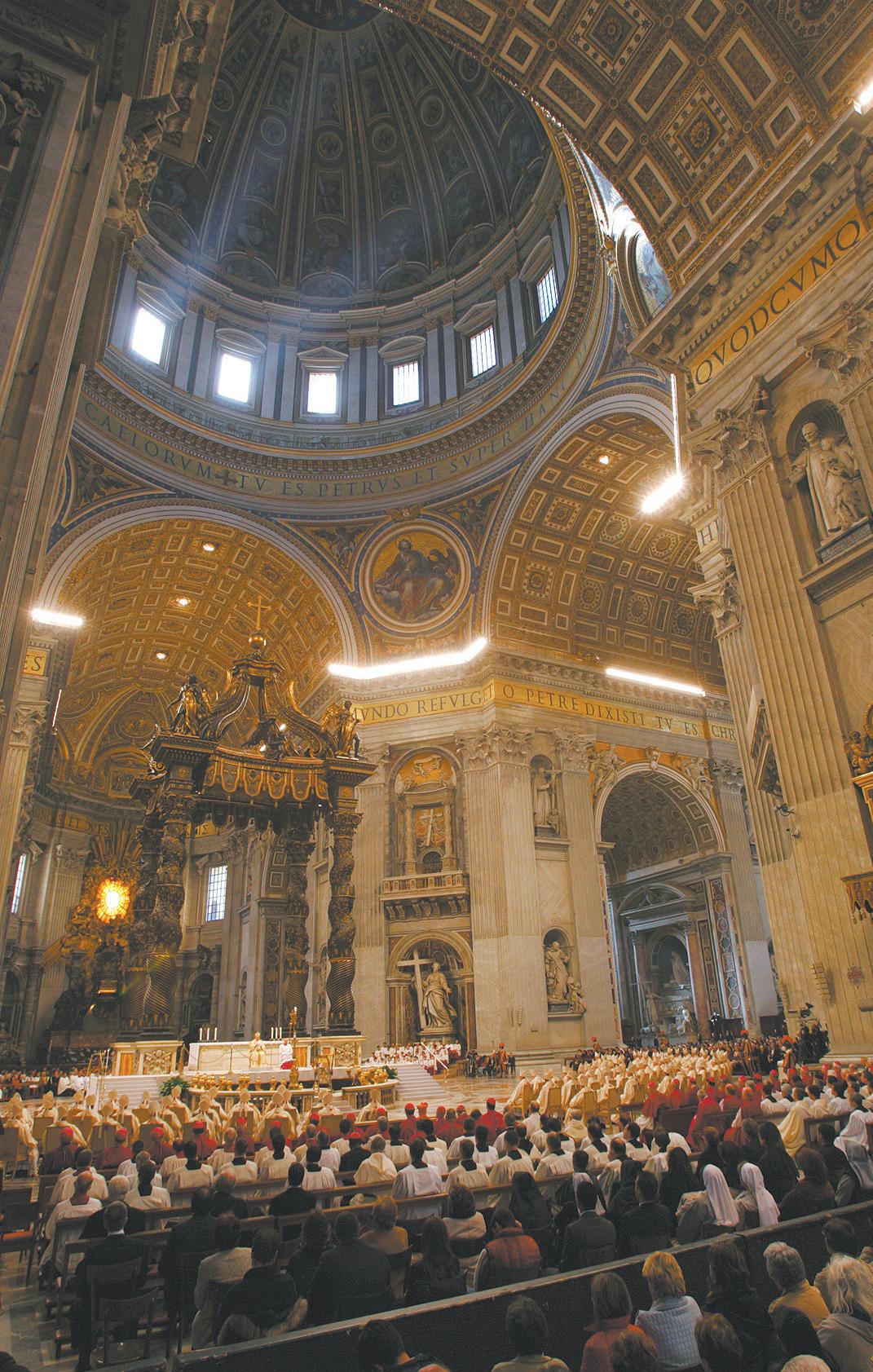
Committee hopes translation will be completed by 2009
■By
John ThavisVATICAN CITY (CNS) - An international liturgical committee that advises the Vatican reported progress in its work on the new English translation of the Mass.
After meeting at the Vatican from September 2-6, the Vox Clara Committee said it hoped the English translation of the Roman Missal would be completed and approved by the end of 2009.
It was the first time a specific date had been anticipated for the completion of the lengthy project. The third edition of the Roman Missal was promulgated in Latin by Pope John Paul II in 2002, and work on the English translation began soon afterward.
A Vox Clara statement said its meeting reviewed the most recent draft translations of the Roman Missal, as produced in English by the International Commission on English in the Liturgy, or ICEL, which is preparing the translation in several sections.
The material included Masses for various needs and intentions, ritual Masses, and the eucharistic prayers for Masses with children.
“The members found the texts to be excellent, although suggestions were made for ways in which the choice of alternate words or phrases could render a few sections more faithful to the Latin original or easier to proclaim and comprehend,” the statement said.
It said the final draft translation for the missal should be published by next spring (US calendar).
Then ICEL will complete a second draft, taking into account the reactions of English-language bishops’ conferences and the Vatican’s Congregation for Divine Worship and the Sacraments.
After that, the bishops’ conferences vote on the second draft. The Vatican’s worship and sacraments congregation then takes final action, considering any eventual amendments that are proposed by bishops’ conferences.
Church sources said that, in the end, most experts expect the Vatican to come up with a single, consensus version of the missal to serve the entire English-speaking world.
The Vox Clara Committee, made up of Englishspeaking bishops, is chaired by Cardinal George Pell of Sydney, Australia, and works closely with the worship and sacraments congregation. The committee last met in December 2007.
with faithfulness to original texts and their meanings
properly,” Fr Deeter said, “and most bishops are not Latinists or liturgy experts, so they gave their approval to the 1973 translation without realising all the small points that were objected to by those who read it over carefully.”
Archbishop Mark Coleridge says this retranslation of the Missal is “a fresh attempt to retrieve still more of the vast riches of the traditions of the Church...”
● Theology of Grace.
Archbishop Coleridge sees this as the most important of the three.
Often where the Latin uses words asking God to do something, it says, “make us” or “grant us”, yet it has, in almost all cases, translated as “help us” which implies that God helps us to a certain point and then leaves us to ourselves.
“Catholic theology says God never leaves us; His grace accompanies us in every stage of our lives,” he said, likening it to a parent teaching a child to ride a bike.
“You hold onto the bike until you think the child is balanced until the child goes on his own… this is what using the term “help us” implies.
But by imploring God to “make
us” or to “grant us” it gives a stronger sense of God who makes things possible.
“That goes to the heart of the Catholic understanding of who God is, who we are, how God relates to us and how we relate to God.”
This tradition traces back to St Augustine.
Therefore, Archbishop Coleridge says, this re-translation of the Missal is “a fresh attempt to retrieve still more of the vast riches of the traditions of the Church and the fullness of the Catholic faith”.
“That’s at the core of all this,” he says.
To pass on its riches and thus to generate new missionary energy was the purpose of the liturgical renewal promoted by the Second Vatican Council.
“The only thing that can provide greater missionary energy is a greater feeding from tradition,” he said.
In this way, “we’re not just tinkering with words in this project, but vital elements of the Catholic faith”.
Fr Deeter also reminds us that almost every time the Latin says “Dominus” – Lord – it is translated in the current Missal as “Father”, but the Roman Rite hardly ever addressed God as “Father”, rather as “God” or “Lord”.
For example, the Latin might say “Almighty and merciful God”, but the English translation says, “Father”.
“But if we miss out on the grandeur of God’s majesty we’re missing a key theological point: the intimacy of the Incarnation is that God, who is so far beyond us, actually decided to live among us and get messed up in our lives,” Fr Deeter said.
But if we’re always addressing God in human terms and not conceptualising Him in heaven surrounded by courts of angels, then what’s the big deal about Him coming down to us?
Re-badging God as “Father” also makes it seem like God the Father came down to live among us, which He never did.
This is where Archbishop Coleridge’s St Peter’s Basilica comparison comes in handy to give us some perspective about the theology.
The Mass was celebrated in thanksgiving for Pope Benedict XVI’s recent document authorising expanded use of the Tridentine Mass.
Cardinal Pell is also chair of the Vox Clara (“clear voice”) Committee, created by the Vatican to advise the Congregation for Divine Worship and the Discipline of the Sacraments, the Vatican’s liturgical agency, on English translations to the Roman Missal.

Over time, small changes can mean much
Here are some examples of proposed changes to the words of some prayers of the Mass following the Vox Clara Committee’s translation work
Draft translation
Greeting
Priest: The Lord be with you
R: And with your spirit
Penitantial Rite 1
I confess to Almighty God and to you, my brothers and sisters, that I have sinned exceedingly in my thoughts and in my words, in what I have done and in what I have failed to do, (all strike breast) through my fault, through my most grievous fault, therefore I ask Blessed Mary ever Virgin, all the angels and saints, and you, my brothers and sisters, to pray for me to the Lord our God.
Absolution
Priest: May almighty God have mercy on us and, with our sins forgiven, lead us to eternal life.
Nicene Creed
I believe in one God, the Father almighty, maker of heaven and earth, and of all things visible and invisible.
I believe in one Lord Jesus Christ, the Only-begotten Son of God, born of the Father before time began. God from God, light from light, true God from true God, begotten, not made, one in being with the Father: through whom all things were made. Who for us and for our salvation came down from heaven,
(At the following words, up to and including and was made man, all bow).
and by the Holy Spirit became incarnate of the Virgin Mary, and was made man.
Crucified also for us under Pontius Pilate, he suffered death and was buried. On the third day he rose again in accordance with the Scriptures; he ascended into heaven and sits at the right hand of the Father. He will come again with glory to judge the living and the dead, and his kingdom will have no end.
I believe in the Holy Spirit, the Lord, the giver of life: who proceeds from the Father and the Son, who together with the Father and the Son is worshipped and glorified, who has spoken through the prophets.
I believe in one holy, catholic and apostolic Church, I confess one baptism for the forgiveness of sins, and I await the resurrection of the dead and the life of the world to come. Amen.
Eucharistic Prayer Introduction
Priest: The Lord be with you.
R: And with your spirit.
Priest: Let our hearts be lifted high.
R: We hold them before the Lord.
Priest: Let us give thanks to the Lord our God.
R: It is right and just.
Eucharistic Prayer I
For the Church
Most merciful Father, we therefore humbly pray and implore you through Jesus Christ, your Son, our Lord, to accept and bless these gifts, these offerings, these holy, and undefiled sacrifices, which we offer you in the first place for your holy Catholic Church: be pleased to grant her peace, to guard, unite and govern her throughout the whole world, one with your servant N. our Pope, N. our Bishop and all bishops who, holding to the truth, hand on the Catholic and apostolic faith.
Current translation
Greeting
Priest: The Lord be with you. R: And also with you.
Penitantial Rite 1
I confess to Almighty God, and to you here present, that I have sinned through my own fault (all strike breast) in my thoughts and in my words, in what I have done, and in what I have failed to do; and I ask blessed Mary ever Virgin, all the angels and saints, and you here present, to pray for me to the Lord our God.
Absolution
May Almighty God have mercy on us, forgive us our sins, and bring us to everlasting life.
Nicene Creed
We believe in one God, the Father, the Almighty, maker of heaven and earth, of all that is, seen and unseen.
We believe in one Lord, Jesus Christ, the only Son of God, eternally begotten of the Father, God from God, Light from Light, true God from true God, begotten, not made, of one Being with the Father. Through Him all things were made. For us men and for our salvation he came down from heaven:

Eucharistic Prayer II - Invocation of the Holy Spirit Lord, you are holy indeed, the fountain of all holiness. Let your Spirit come upon these gifts to make them holy, so that they may become for us the body and blood of our Lord, Jesus Christ.
Eucharistic Prayer III - Praise of the Father
Father, you are holy indeed, and all creation rightly gives you praise. All life, all holiness comes from you through your son, Jesus Christ our Lord, by the working of the Holy Spirit. From age to age you gather a people to yourself, so that from east to west a perfect offering may be made to the glory of your name.
Eucharistic Prayer IV (in part)
Look, O Lord, upon the Sacrifice you yourself have given to your Church, and grant in your kindness to all who partake of this one bread and one cup that, gathered into one body by the Holy Spirit, they may be made perfect as a living sacrifice in Christ to the praise of your glory.
Memorial of the Paschal Mystery and Offering
1 We proclaim your death, O Lord, and profess your resurrection until you come.
OR 2 When we eat this bread and drink this cup, we proclaim your death, Lord, until you come.
OR 3 Save us, Saviour of the world, for by your cross and resurrection you have set us free.
(All bow during these lines):
by the power of the Holy Spirit He became incarnate of the Virgin Mary and was made man.
For our sake He was crucified under Pontius Pilate; he suffered death and was buried. On the third day He rose again in accordance with the Scriptures; He ascended into heaven and is seated at the right hand of the Father. He will come again in glory to judge the living and the dead, and His kingdom will have no end.
We believe in the Holy Spirit, the Lord, the giver of life, who proceeds from the Father and the Son. With the Father and the Son He is worshipped and glorified. He has spoken through the prophets.
We believe in one holy Catholic and apostolic Church. We acknowledge one baptism for the forgiveness of sins. We look for the resurrection of the dead,
And the life of the world to come. Amen.
Eucharistic Prayer Introduction
Priest: The Lord be with you.
R: And also with you.
Priest: Lift up your hearts.
R: We lift them up to the Lord.
Priest: Let us give thanks to the Lord our God.
R: It is right to give him thanks and praise.
Eucharistic Prayer I
We come to you, Father, with praise and thanksgiving, through Jesus Christ your Son.
Through Him we ask you to accept and bless these gifts we offer you in sacrifice.
-Prayer For The Church
We offer them for your holy Catholic Church, watch over it, Lord and guide it; grant it peace and unity throughout the world. We offer them for N. our Pope, for N. our Bishop, and for all who hold and teach the Catholic faith that comes to us from the Apostles.
Eucharistic Prayer II - Invocation of the Holy Spirit
Truly, Lord, you are the Holy One, the fountain of all holiness. Therefore make holy these gifts, we implore you, by the outpouring of your Spirit - that they may become for us the Body and Blood of our Lord, Jesus Christ.
Eucharistic Prayer II - Praise of the Father
Truly, Lord, you are the Holy One, and all you have created rightly gives you praise, for through your Son our Lord Jesus Christ, by the power of the Holy Spirit you give life and holiness to all that is, and you never cease to gather a people to yourself, so that from the rising of the sun to its setting a pure oblation may be offered to your name.
Eucharistic Prayer IV (in part)
Lord, look upon this sacrifice which you have given to your Church; and by your Holy Spirit, gather all who share this one bread and one cup into the one body of Christ, a living sacrifice of praise.
Memorial of the Paschal Mystery and Offering
1: Christ has died, Christ is Risen, Christ will come again
OR
2 Dying you destroyed our death, rising you restored our life. Lord Jesus, come in glory.
OR
3 When we eat this bread and drink this cup, we proclaim your death, Lord Jesus, until you come in glory.
OR
4 Lord, by your cross and resurrection you have set us free. You are the Saviour of the world.
A Journey to Kalgoorlie
 ■ By Archbishop Hickey
■ By Archbishop Hickey
It is a sad reality that the administration of a modern complex Archdiocese leaves one with little time to think and reflect. I am sure I share my frustration with others who lament the absence of time simply to muse.
One of my New Year’s resolutions, bound to have a short life, is to change all that, to turn over administration tasks to others in order to find the time for quiet prayer, contemplation and simply thinking.
My seven hour train trip to Kalgoorlie on the last weekend of December gave me precisely that time. With both priests away I took the opportunity to look after the weekend parish Masses and other duties in the twin parish of Kalgoorlie/Boulder. I went by the Prospector but flew back to Perth on Qantas.
I armed myself with a few books – “God and Caesar” by Cardinal George Pell, “Chance or Purpose” by Cardinal Christopher Schonborn, the December issue of Quadrant and, of course, my Breviary.
Things were on my mind. The most recent research told me that the Church is still losing active members, or more truthfully, not picking them up. It is not so much that people lapse. It is time to say that in many, no most of the young the Faith does not take strongly enough for them to lapse. They never seriously started.
This is true despite all the efforts to evangelise, whether through the families, through the schools, through the RCIA and even through my small efforts in the media. Yes, the profile is there.
I am generally known by the shop staff or by the train officials thanks to Channel 9 ads. I am happily known by the poor walking the streets, but recognition itself is not evangelisation.
I armed myself with a few books – “God and Caesar” by Cardinal George Pell, “Chance or Purpose” by Cardinal Christopher Schonborn, the December issue of Quadrant and, of course, my Breviary.
Ben Cousins is recognised, Rose Porteous too. Recognition is only a start. What of the message I carry?
What of the message that the whole Church offers? Either we are offering it ineffectually or the message itself gets lost in the competitive market of other messages.
I am in touch with the stirrings among the young and the new enthusiastic groups that see through the false promises of the world, and when I am with them I feel they are about to change the face of the earth through the Holy Spirit. Then I am back to the reality around me – the absence of young leaders in many parishes, with of course, some notable exceptions.
Hence the need to reflect, read, think and pray, especially at the beginning of a New Year. Why have I brought two books by two Cardinals? One of the things on my mind is the battle of ideas in which atheist writers have launched a powerful and sometimes vicious attack on religion.
Take evolution and the origin of the universe, for instance. Is it possible, as they claim, that science can explain everything, and is it

intellectually lazy to call on religious explanations for what we can’t yet explain?
If all that is, has evolved from a “big bang” at the beginning of everything, can we not say that all this was the way God planned it, even to bringing something out of nothing? You see, I can’t even say “creation” because the scientists say that “creation” begs the question. It implies a “creator” which, they say, a scientist has no right to do.
They claim that the appearance of matter where before there was none is natural, not supernatural, and it is our job to find out how, not to jump to conclusions about a “creator”.
So, bring on the Cardinals.
Cardinal Schonborn of Vienna caused a stir recently claiming that there was evidence of design in nature, and therefore there must be a designer. So did St Thomas Aquinas. It brought out the opposition in force, claiming that the good Cardinal must therefore believe in a six-day creation and a snake in the Garden of Eden. A young universe? What about the stars? No evolution? What about the appendix?
The Cardinal was not saying that. He was saying that Genesis is not a scientific textbook but God’s revelation to us that everything owes its existence to the creator, and that nature has a goal, a purpose.
Evolution is random. It ignores purpose. It is mindless. Furthermore he states that a materialistic view of the universe cannot cope with ethics except in a utilitarian way that can change with circumstances.
By this time I had moved well beyond Northam skimming along towards Merredin.
Cardinal Pell gave me more help. He accepts that some sort of material evolution did occur.
One cannot deny that changes occurred in the palaeontological record. But he says that the essential aspects of man, the spiritual dimension, did not evolve and could not. The values of forgiveness, pity, altruism or selfless generosity, the desire for truth, the desire for justice, love, and the judgements of conscience, defy a materialistic plan. I agree.
I find the focus on reason and ethics to be a far more satisfactory challenge to evolution than questioning physical evidence of change.
The conclusion I reach is that the spiritual and religious dimension in humankind points to the presence of an intelligence at the centre of creation, not only because evolution as it
is at present cannot explain them but needs to accept a non-evolved intelligence to make sense of why anything exists. I find myself agreeing with Cardinal Pell when he says that “to reduce ethics and religion to the physical order is to lose the very values that the archbishops uphold” (pg 96). He will be pleased.
Having destroyed atheistic evolution by the time I get to Merredin it is time for a cup of coffee.
Now to Southern Cross.
My other worry is the pitiful and shameful state of many Aboriginal communities around Australia. I include Perth as well, because the ineluctable homelessness and misery in Perth’s inner city, where I live, are the lot of many Aboriginal people, victims of the same unthinkable experiences that damage children irreparably for life.
My concern is Christ’s concern for the outcast and the rejected ones. Mine is all the more existential because for all my trying, not without prayer, I have not been able to improve their lives or their lot except marginally. No conversions to Christ, no turnaround of lives, no good news. I settle for the offer of friendship, warmly received, and commend these people to God’s love and understanding.
My own inadequacies do not prevent me, at the same time, from calling out to the Federal and State Governments that people like these need the help of a religious vision, because the problems of hopelessness, despair, rejection and lack of self esteem are as much spiritual problems as they are the result of lack of resources.
The Australian Bishops have asked the Federal Government to engage the willing help of Bishop Hurley of Darwin and Bishop Saunders of Broome in what they are doing. So far they have not done so.
Can police and new laws about alcohol and other such measures rebuild families, restore fatherhood, prevent child sexual abuse, cure addiction and replace hopelessness with a meaningful life?
The Missions come to mind. Perhaps that’s why the Governments mistrust the Churches. But let me say this, the Missions gave education and values to the children in their care so well that many of today’s Aboriginal leaders state proudly how much they are in debt to those same Missions.
The Missions may not have understood the value of maintaining links with the extended families, or keeping their traditional names or preserving much of their culture, but
they did not destroy those children. They equipped them to deal with the enormous social changes.
Furthermore, I know of no incident of child sexual abuse in the Missions. They occurred in other Church-run institutions, but apparently not in the Missions. Perhaps there were some abuses but I have not heard of them and I spent many years of involvement with Catholic residential care.
A long article by Patrick McCauley in Quadrant (Dec 2007) captured me. He described himself as a “leftie school teacher” working in the outback. He is now a Melbourne writer and poet. He had to go bush again, follow the track of Burke and Wills to make sense of what he had heard at the 2007 Winter Series of talks at the Australian Catholic University called “Whatever Happened to Reconciliation?”
The truly glittering list of academics said all the right things about Aboriginal Reconciliation and the Federal intervention into the Northern Territory which began halfway through the Winter School.
The philosophers and academics agreed on a number of principles and themes: “selfdetermination, community consultation, land rights, genocidal intent, racism and invasion” (pg 36).
McCauley’s flight into the desert was his way of thinking through what he had heard and coming to his conclusion, despite his own leftie orthodoxy, that the problems of the Northern Territory Aboriginal communities were precisely due to these principles.
In the very name of self-determination they had been left without help to sink into squalor and misery.
I could not believe what I was reading. I almost shouted out loud in the train. At last someone can see the reasons for the failure of Government policies in this area.
It cleared the mental decks for a more productive approach. In my mind, Christ has offered solutions to human misery that are about love not money, dignity not words, belonging not exclusion.
By this time, I was well past Southern Cross, heading into Kalgoorlie in 44-degree heat. I opened my Breviary, took it slowly, encountered the living God there and knew with fresh conviction, that, whether it is evangelisation, the defence of the Faith and Truth, or the plight of the poor, we cannot make a difference without the power, wisdom and love of the living God working in our lives. This is what we can offer in the name of Christ.
Perspectives
Trust in Jesus, it all starts from there
How I Pray



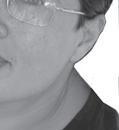 with Debbie Warrier
with Debbie Warrier
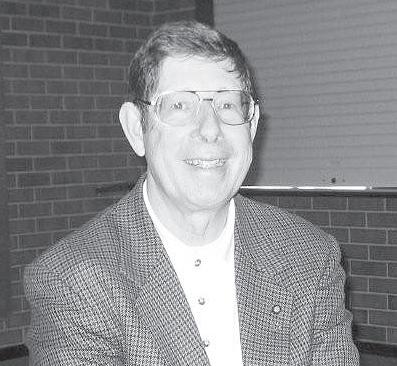
My life without my faith would be depressing. By and large I’ve had a joyful life. This year we are celebrating our 40th wedding anniversary.
We enjoy our family and it will be an excuse to get together. In my 32 years of service as a policeman I was never injured. I retired in 1996 and invested in a small business. It helps people with their cash flow. My wife Georgie and I are in the process of winding that up and becoming pensioners!
When I get up in the morning I usually go over to our bureau where we have a little altar.
One of the prayers I start off with is “Jesus, I trust in you.” I offer myself to Jesus. I trust that whatever happens during the day will be guided and anointed by him. Then generally I go and read the Bible readings of the day.
After that I read the commentary or overview on those readings in a book called, “Living Faith.” Depending on what is happening during the day, I often read a website that offers a meditation on the day’s readings. Most days that’s followed up by morning Mass.
I was an altar server for a number of years and became an acolyte in 1975. There was that love to serve at Mass. Mass is
at the centre of our faith. The Sacraments are important to me. From the very time we come into our faith we receive the Holy Spirit, the sanctifying graces.
My wife and I are involved in two charismatic prayer groups. We are part of the Christian Life group and belong to the Equestrian Order of the Holy Sepulchre of Jerusalem. Part of belonging to the charismatic prayer groups means people are always asking for prayer and we pray for them. We pray for those on the parish sick list, family, friends and world situations. We pray for our Parish Priest, Father Vincent Conroy and our parish All Saints Catholic Church, in Greenwood. We belong to a rosary group that meets monthly and we have fellowship afterwards. I generally go to reconciliation once every three months.
The person who had the biggest influence on my faith was my mother. From the first introduction I had this attachment to this Jesus, this God. Other people have strengthened my faith, like when I go to a conference and come into contact with people who have spirituality that lifts you to a higher plane. It brings you into a more intimate relationship with God. Georgie is a big support to me. We share our faith together, so it’s not in isolation. Other people include the Pope and Mother Teresa; the way she lived her life.
I suppose my faith means life to me. I often wonder when difficult situations come along how people who don’t have faith cope. We know that God is always there and we don’t need to make an appointment.
The biggest challenge facing Catholics today is apathy. We’ve had it too good too long. The world has had a big influence in desensitising us. I have a great hope that this New Evangelisation will come about as a result of World Youth Day 2008. I think that is going to be something really significant for Australia and the world.
Acolyte Des Hunter as told to Deb Warrier
Save marriage, save the world...

Body Language
By Christopher West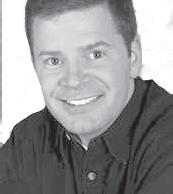
about the proposed ban on samesex “marriage” in Florida.
A Commentary on the Intersection of Faith, Sex and Culture
On the day after Christmas, the Tampa Tribune published an article about the possibility of Florida becoming the twenty-eighth state to pass a constitutional amendment banning samesex “marriage.”
The following is an open letter to Jack Nelson Steward who posted a response to the article online.
Dear Jack, I’m writing in response to your impassioned post
You asked, “What real interest does the State have in the gender of two people joined in marriage?
“As far as the State is concerned the civil requirements, rights and liabilities of marriage are the same no matter what the sex of the partners.”
Jack, I’d ask you to reflect: What is it that a man and a woman can do that two men or two women cannot do?
Is it significant?
Important?
Meaningful?
Does the State have an interest in it? If so, is that interest significant?
Important?
Meaningful?
Forgive me if what follows sounds flippant, but imagine, if you will, that an alien being from a sex-less galaxy landed on earth to study the human being.
Coming from a sex-less world, the male-female difference would likely be the first thing to catch its attention.
“What is this difference for?” it would ask. Inquiring minds want to know.
Upon study, this alien would readily observe that each member of the human species is amazingly
self-sufficient in his or her functions as an organism.
The heart, the lungs, the kidney, the pancreas, the stomach, the bladder, the rectum, etc. all work together to carry out their functions.
And both sexes have all the same organs ... except ... except what we fittingly call the sexual organs.
There is one function, this alien has discovered – and a critical function indeed – that simply cannot be carried out without cooperation from another member of the species. And that other member of the species must be of the opposite sex (ie, must have different sexual organs) or said function doesn’t function.
This is the light that illuminates for the alien the most basic purpose of the genitalia.
The sexual organs of male and female actually work together in a stunning, harmonious interdependency to generate (hence the term “genitalia”) new members of the species.
Furthermore, since the baby born to them cannot survive on its own, the alien rightly realises that the man and the woman who co-operated to bring this life into existence, if they are to be responsible, must commit themselves to rearing their child.
Icons: a stark and dark gaze for some, a saving
Perth-based Scalabrinian Tony Paganoni CS has started a series of reflections on the significance of cathedrals in the life of a church and the wider community.
The word ‘icon’ is generally used to describe those religious pictures – mainly portable wood panel paintings –which have a prominent place in the life and worship of the Eastern Orthodox Churches. The Greek

Spirit in Stone of Cathedrals and communities
Anthony Paganoni CSword means image: it is the same word as used in the Greek Bible in Genesis chapter one, where we are told that man is made in the image of God. The same word is used by St Paul in speaking of Jesus Christ being the image of the invisible God in the epistle to the Colossians. To many people with a Western outlook on religion and its artistic

expressions, icons have not captured their imagination. They are considered odd paintings! They have been dismissed as insignificant with such unflattering descriptions as ‘flat’, ‘dark’, and ‘primitive’. The lack of realism and of movement is also a major problem.
Only slowly has general interest come to be taken in the more
ancient traditions and works of Christian iconography. Layers of mental and spiritual misunderstanding have had to be peeled back, as well as layers of grime and painting on the icons themselves, before the true glory and wonder of the great tradition of icon painting could be revealed.
The work of scholars, restorers and men of prayer has opened up the doors of perception and now we can enter into the world of the holy icons with a sense of fascination. This entry into the world of icons can simultaneously be an entry into our own interior life, a passing through the ‘narrow gate’ that leads to Life.
My acquaintance with icons came about through an extended family connection. Every time I return to Italy, I try to meet relations and get acquainted with the family news. Way back I had heard that one of my cousins had fallen prey to hard drugs. Married, with two children, and constantly struggling to kick the habit. After the ordeal was over, he would recall a sense of shame and impotence at offering his growing children a model which, in his mind and to the inquisitive mind of his two boys, could only be regarded as unsatisfactory.
The turning point in his life occurred when he stumbled upon the elaborate process of icon
ourselves
Precisely this commitment (the commitment to responsible genital intercourse as the foundation of future generations) is called marriage. The State has a vested interest in maintaining this relationship (marriage) precisely because it has a vested interest in its own survival.
Jack, you assert that marriage “works the same no matter who the people are.” Whether its “Adam and Eve, or Adam and Steve, it’s the same profound lifelong journey.” I’m sorry, Jack, this is simply not the case.
What a man and a woman can do is stupendously, wondrously different than what two men or two women can do.
It is not “the same.” And its not “the same” precisely because of the sexual difference.
As you see it, “Any two people who are sufficiently committed to each other ... should be encouraged to [marry].” Does this hold for a father and his daughter? A mother and her son? A brother and sister? Why can’t members of the same family marry?
For the same reason members of the same sex can’t marry: marriage is the relationship that orders genital intercourse to the good of the spouses, the good of their offspring, and, as a result, the good of the State.
Members of the same family should never engage in genital intercourse (incest) and members of the same sex are simply unable to engage in genital intercourse.
Whatever behaviour they might engage in, a man cannot unite his genitals with another man’s genitals, nor can a woman unite hers with another woman’s. It’s simply impossible.
Hence, it’s not that members of the same sex could marry but Church and State “ban” it. Rather, it’s that it’s impossible for members of the same sex to marry and the Church and State recognise that fact – or at least should recognise it.
Perspectives

Edith Cowan University Journalism student Joanna Lawson has gone to India this summer to establish Branches, a project aimed at helping the exploited working poor in Goa. Her column appears regularly in The Record.
The Vine Branches
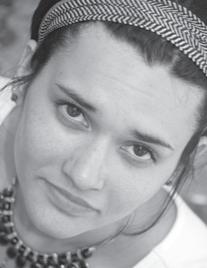 By Joanna Lawson
By Joanna Lawson
The southern regions of Goa are considered to be the fairer cousins of those in the north, though nobody who lives that side of the Mandovi river will ever admit it. The similarities between Goa and Perth in trans river rivalry struck me this week, as did the
matching weather, even though it is winter, the days are long and hot reaching 38 degrees.
Even though we are a family of the north, my aunts, uncles and cousins took time off work and school to holiday for a week with us in Benaulim, a coastal village 12 kilometres south of the major city of Margao.
The reason for it winning the geographical beauty pageant is because the spread of touristy shacks and bland resort buildings has not made an impact there... yet.
For many people of Goan origin, especially families that have moved to economic centres such as Mumbai to earn a living, the joy of returning to your “hometown” was to connect with your culture, your history.
Drawing water from the well. Making a wood fire and labouring over the production of Goa sweets with your Nana.
Plucking a ripe mango from a tree (so much more satisfying than jemmying open a wooden packing box and receiving a few splinters in the process).
It is a great joy to walk along village roads, still narrow because they
were etched into the countryside to accommodate bullock carts.
But as you look around, the signs of an exodous are becoming more apparent.
The old Portuguese style houses, some built hundreds of years ago, are emptying. They are constructed with laterite blocks, but many of them have crumbled to ruins. It is sad to see beautiful buildings abandoned to the ravages of time, no doubt for an apartment in a big city.
Perhaps the state of many of the traditional homes is the least of the problems in Goa’s villages.
While some choose just to leave their houses locked up (great for local children who might like to speculate how many ghosts live there now), there are others who sell to developers, and springing up everywhere are resort buildings: big, flash and corporate.
The trend is slow, but it is there and it is sad.
But time waits for no man, India is booming, and there is more money to be made in a city than tending the family’s livestock.
But here in Benaulim, it might be a while before it wears the “ruined” tag of beachside villages such as
Calangute or Baga.
There is still much of what is traditional alive and kicking, families carrying on what they were born into, and what they will pass on to their children.
We bought bread from a baking family just across the road, and naturally talk went from bread to our personal business to other matters of the world.
The matriarch of the house was making sweets in time for Christmas over a wood fire in a large pot that seemed to have served many Christmas duties judging by the blackness of its exterior.
The contents bubbled and plopped, sending out steam with every splash.
She stirred like a machine and it seemed hard work for an old lady. “Stand back, it spashes,” she said, wiping some hot globs from her arm.
We concluded our business and just as we were about to leave, she took a few that she had made before and offered them to us.
“Take, Happy Christmas” she said.
Read Joanna’s Blog on the internet at: www.thebranchesproject.blogspot.com
Corporatisation induces nostalgia for old force for others
painting. During one of his many attempted and unsuccessful recoveries in one of the rehabilitation centres for drug addicts, he was attracted by the immobility of the images presented, their stark gaze. He started attending practical courses and became engrossed in the process leading up to the production of icons: fasting and prayer for at least a month with a lot of meditation.
The end result is this: he has become an enthusiastic icon painter. He travels to Russia to spend long periods of time in monasteries. His icons sell well in Italy. What is more important is that somehow (he doesn’t know why!) he can live
without injecting himself. He happily states that now he is injecting himself with something else altogether.
In recent times there has been a considerable meeting of Eastern and Western traditions, and in many European monasteries, religious houses and places of worship, icons now occupy a prominent position as focal points of devotion alongside or in place of the statues that have long been important visual aids to devotion in Western Churches.

Review
Our choice: walk with them or over them
Man and Woman God Made Them
By Jean Vanier2007
A new edition of Jean Vanier’s heartfelt reflection on longlasting friendship with the mentally disabled is timely.
■ Francis Phillips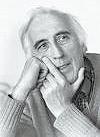
Jean Vanier, a French-Canadian former naval officer and academic, is the founder of L’Arche, a worldwide organisation of small, homely communities where men and women with a learning disability live alongside - he would rather say “in communion with” - their carers.
This is a new edition of a book that was first published in 1985. Having found it an inspiration when I first came across it, I am glad that it is again seeing the light of day - the more so because the dignity of a human being and right relations between the sexes are under relentless and increasing assault in our secular society.
In an age where everyone is entitled to a sexual relationship and where disabled people, when not aborted before birth, are often vulnerable to the well-meaning abuse
of those who care for them, Vanier’s is a prophetic voice.
He describes this book as a meditation and this is precisely what it is: a discursive (occasionally rambling), prayerful and heartfelt reflection on the nature of humanness, particularly in relation to those who cannot speak for themselves.
Yet his words, he suggests, are applicable to everyone, for we all need bonds of affection with others and yearn for a “gift relationship” that is the antithesis of selfishness and possessiveness.
The mentally handicapped (a useful if politically incorrect expression nowadays) often suffer acutely from the anguish of rejection and the loneliness this entails. The answer, as Vanier sees it, is to create communities where authentic relationships can flourish. “It is possible”, he believes, “to open ourselves to one another, to create bonds with one another, to enter the world of love, communion and gift… only as we are gradually liberated from the powers of egoism that keep us closed up in ourselves.”
The key, he emphasises, is spiritual friendship.
Where genuine, long-lasting friendship occurs, the demand for sexual expression divorced from love is mitigated.
Unlike those who would dispense contraceptives to fragile people and then let them flounder as best they may under this supposedly liberated dispensation, L’Arche homes practise loving care and support in a milieu of acceptance, welcome and celebration.
Occasionally, although rarely, the possibility of marriage between two residents arises; in such cases Vanier suggests a careful discernment to discover if the appropriate degree of emotional maturity and the capacity to exercise “responsibility and fidelity towards another” are present.
Unlike religious communities, which are vowed to celibacy, L’Arche is a looser lay organisation, made up of many short-term volunteers and some long-term assist-

ants. Jean Vanier himself has chosen a life of celibacy, in service to the marginalised and rejected.
He would like more L’Arche assistants to make a similar commitment, pointing out that it is hard for those with a learning disability, who have no choice in the matter, to watch their carers - to whom they become emotionally attached - leave to get married.
As others who care for their disabled loved ones would testify, Vanier affirms that the residents he has known have taught him “the discovery of my own humanity”. So often society patronises the poor of mind, or pushes them aside in its emphasis on worldly success.
In contrast, Vanier confesses that he feels “far from those who are strong, virtuous and self-willed. I feel more at home with weak and vulnerable people like myself.” Seen from this perspective, society has an elementary choice: to walk
alongside those who are dispossessed of brains and beauty - or to walk over them.
Writers like Mary Shelley and her creation of Frankenstein, or Victor Hugo with his Quasimodo, the hunchback of Notre Dame, provide an imaginative and dramatic representation of “the outsider”, someone rejected by the world as frightening and ugly.
In real life these outsiders are often neglected or forgotten. Vanier would bring them into the heart of society - in order that their unique “spiritual fecundity” as he describes it, might enrich and humanise it.
He asks one question very pertinent for today: “Is there a link between sterilisation and death?” adding “I am deeply disturbed by the number of parents who seek sterilisation for their child with a disability.
Isn’t it a serious injustice to mutilate someone (without their con-
sent)?” Although he does not refer to them, the question Vanier raises here has poignant relevance to two recent cases that have attracted widespread media attention and predictable controversy: those of Ashley X in the United States, who underwent invasive and radical surgery to keep her body childlike, and Katie Thorpe in the UK, whose mother has applied for her daughter to be given a hysterectomy.
Many voices have been raised in clamorous and emotional support for the families of these two severely disabled girls; too few have articulated the prayerful and eloquent views of Jean Vanier, with his conviction that men and women already traumatised by their afflicted circumstances, require tenderness, loving friendship and respect for their bodily integrity, rather than medical mutilation done for the convenience of others.
Francis Phillips writes from Bucks in the UK.
Admirable spiritual elements in grim, effective thriller
■ By Harry ForbesNEW YORK (CNS) - At the start of I Am Legend (Warner Bros), a grim but effective thriller, Emma Thompson, in a delicious cameo, plays a self-satisfied doctor informing an incredulous news interviewer that she has found the cure for cancer.
Next comes a quick cut to shots of New York devoid of any life except, it seems, Robert Neville, a dedicated military virologist (Will Smith) and his faithful German shepherd, Samantha. Clearly, Thompson’s miracle cure has gone wildly wrong.
Neville is the last surviving person in New York.
He still has his Washington Square Park house but, as we learn in brief flashbacks, there had been a mass evacuation (for healthy people only) of the city, and Neville had sent his wife and child to presumed safety.
As he drives along the empty streets talking to himself and the dog to keep his sanity, he encounters wild (digitalised) deer, ferocious mad dogs and human mutants who can spring forth without warning.
He captures one such creature, ties her down to a table in his lab, and injects her with the serum he has been developing, but to no effect.
He leaves video and audio diaries of his activities, and periodically sends out radio transmissions in the hope someone will hear his reports.
Needless to say, the attacks by the mutant humans escalate as the film progresses, but Neville perseveres.
And we hope it’s not too much of a spoiler to reveal that eventually Neville will encounter two other survivors: a woman named Anna (Alice Braga) and a child (Charlie Tahan).
Director Francis Lawrence’s adaptation of Richard Matheson’s
1954 novel (already filmed twice as The Last Man on Earth in 1964 and The Omega Man in 1971) has some truly eerie - and finely done - scenes of a decimated New York, and the computer-generated images of mutants are scary enough when they come.
Smith is, as always, a compelling presence, but the basic setup ultimately grows tiresome and more depressing than exciting, with even the ending fairly downbeat.
From the Catholic standpoint, there are some pointed and admirable spiritual elements.
In the midst of the evacuation, with helicopter blades churning and thousands of panicked people hysterical to leave the city, the family says a prayer.
Later, when driven to despair, Neville has a severe crisis of faith and denies the existence of God, but predictably undergoes a turnaround before the final fade-out.
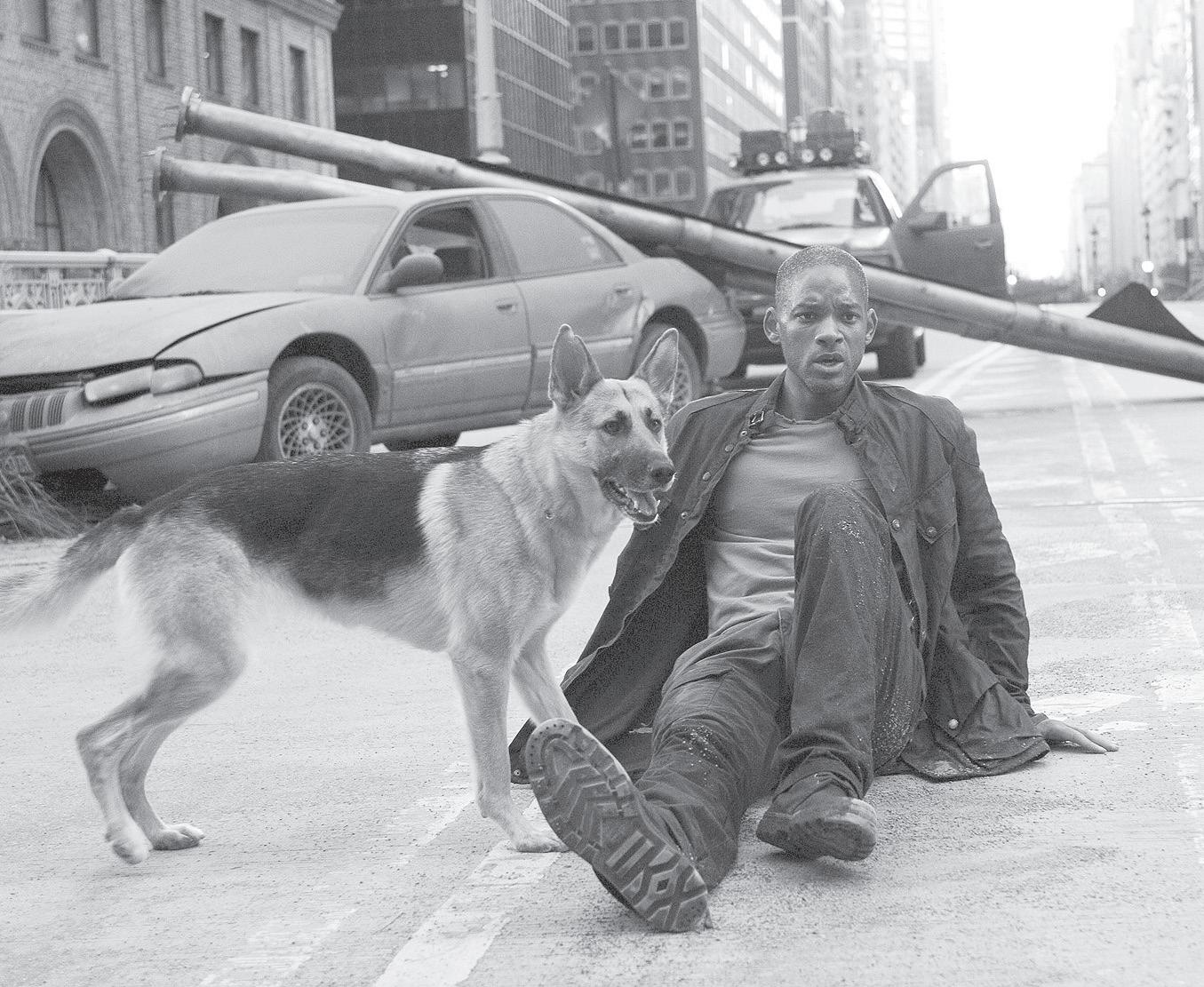
The film contains intense, if isolated, violent sequences, including the killing of the creatures, and scantily clad mutants.
Father’s faith stood out
An interview with Aussie actress
■ By Gabrielle DonnellyYes, Catholicism is ingrained in me. Christmas, it seems, comes earlier every year, and every year, it seems, we shake our heads more wearily at the endless hoopla and commotion.
Well, most of us do anyway –over in Sydney, Australia, there is one woman who confesses that she just cannot get enough of it.
“I love Christmas!” confides Miss Nicole Kidman her rich blue eyes sparkling with pleasure when we meet in Claridge’s for a cup of tea during a recent visit of hers to London. “I love the anticipation, I love the magic, I love everything about it, and aways have – ever since I was a little girl and used to sneak downstairs to see the presents wrapped under the tree.
“It’s a big thing in our family. We’ve already got the tree at home, and as soon as I get back to Sydney, we’ll put the fairy lights up in the house.
“The whole family comes in: my husband’s family, my family, my parents, my sister and her kids, all of the aunts and uncles, a few dropins, everyone.
“My sister does most of the cooking, I do the party on the night of the 23rd, we go to Mass on Christmas Eve, and the big family gathering is on Christmas day, when we gather around the piano and sing carols. It’s a lot of fun- I love all that stuff”.
She stops, and shakes her head, laughing at herself. “I probably still believe in Santa Claus...,” she concludes, mock-despairingly.
She is sending herself up, of course. But she does admit, when you ask her, that her childhood – she is the elder of two daughters of biochemist and psychologist Dr Anthony Kidman and his wife Janelle Kidman – was such as some pretty nice dreams are made of.
My sister does most of the cooking, I do the party on the night of the 23rd, we go to Mass on Christmas Eve, and the big family gathering is on Christmas day, when we gather around the piano and sing carols. It’s a lot of fun- I love all that stuff”.
“All the references that I have from my childhood are very, very good,” she smiles. “You know how some people have a quite chequered, ugly memory of childhood?
“Well, I have the opposite where I just look back at it through rose-coloured glasses. My Mum is always saying: ‘But don’t you remember this or that terrible thing that happened?’ And I’m like: ‘No’” She pulls a shocked face, imitating herself. “ ‘ I don’t remember that bit at all!’”
Kidman was actually born in Honolulu, Hawaii, where her father worked briefly, but the family returned to Sydney when Nicole was just four and her younger sister, Antonia, only two. Until recently

her parents lived in the same house where she grew up. It was a happy childhood, she says now, with plenty of love, lots of freedom, and some healthy restrictions, too.
“Both my mother and my father were quite politically aware, with very, very strong social consciences. I’m very grateful that they raised my sister and me to be able to challenge things, and to question things.
“My mother was a feminist and she always wanted us girls to have the same opportunities that boys would have had, but at the same time she kept pretty strict reins on us to keep us in order. It was a bit of a push and pull, really, because I
was quite rebellious by nature, but every time I did something naughty there was always that little voice at the back of my head going: ‘Uh oh, I’m going to get into trouble for this!’ I always had a good strong moral compass, which I think is a hugely important thing to give to children, because it means that even if you do do something wrong, then at least you know it’s wrong, not right. The important part is in knowing the difference”.
If her mother was the day-to-day disciplinarian, she says, it was her father, devout Catholic Anthony, who was her spiritual guide.
“My father has a very strong
life as at a particularly low ebb – in the dark days following her divorce from Tom Cruise – that she was fully able to appreciate the depth of his love for her.
“When I was growing up, I was always much closer to my mother, Dad’s a bit of a loner. He was always going off and reading books and Antonia and I were, like, ‘Dad! Dad? Dad!’ you know? But when I went through… what I went through… I found out who my father was. Because there comes a time when you’re a daughter, that you suddenly need your father. And when you reach out for your father and he’s there for you, well, that’s a very special thing. My father really stood by me at a tough time. He was strong and dignified, and I’m very grateful that I do have a good father, because having him there with me at that time put me in good stead for carrying on with my life and learning to trust again”.
Now, six years after the end of her marriage to Tom, she has indeed, as she puts it, learned to trust again. Her wedding to country singer Keith Urban, at Sydney’s Cardinal Cerretti Memorial Chapel in June of 2006, was a party that is still being talked about among her friends today.
My father really stood by me at a tough time. He was strong and dignified, and I’m very grateful that I do have a good father, because having him there with me at that time put me in good stead for carrying on with my life and learning to trust again”.
Now, 18 months into the marriage, the couple are as happy as could be. “I’m very proud of our relationship,” says Nicole, simply, of her husband. “I’m proud of Keith’s honesty and of his bravery. He’s a wonderful man, and I’m very lucky to have him in my life”.
When they’re not working, the Urbans divide their time between their home in Sydney and the new property they have just bought just outside Nashville, Tennessee.
“We’re the Tennessee Aussies,” she deadpans. “It’s a select group”. Her children Bella and Connor, now 15 and 12, with whom she shares custody with Tom, are growing up happy and healthy, and most important of all, she says, kind and considerate.
Catholic faith, and I have never, ever heard him swear which says something,” she says.
“He has a strong set of values, and he has passed his Catholicism on to my sister and me, but when he gives advice it’s mostly based on being a good person, being tolerant, and doing unto others what you would wish them to do to you. So, yes, Catholicism is ingrained in me, but at the same time I pride myself on being open-hearted and open to exploring many other religions and ideas too”.
Although she has always admired and respected her father she has admitted that it was only when her
“And much, much easier to raise than I ever was – I was a hellion!” Professionally, too, her life is riding high with her new film The Golden Compass
Nicole says the film was a lot of fun to make – and she is particularly pleased with it because at last it is a film which she can show to all the children in her life. “Usually, I’m saying to my friends: ‘Whatever you do, don’t let them see my new film!’” she laughs. “But this is one they can all see, and it’s a lovely thing to show”. She stops, and nods approvingly.
“Particularly as the protagonist of this one is a little girl, not a little boy, so we have something to balance out Harry Potter!”
PANORAMA a roundup of events in the archdiocese
Panoramas
Panorama entries must be in by 5pm Monday. Contributions may be faxed to 9227 7087, emailed to administration@therecord.com.au or mailed to PO box 75, Leederville, WA 6902.
Submissions over 55 words will be edited. Inclusion is limited to 4 weeks. Events charging over $10 constitute a classified event, and will be charged accordingly. The Record reserves the right to decline or modify any advertisment. Please do not re-submit Panoramas once they are in print.
January 17 to 21
ARISE CONGRESS
A Trumpet Call for a Joshua Generation - John 23rd College, John 23rd Ave, Claremont. Speakers: Archbishop Hickey, Derek Williams, Scott Kaldahl, Eddie Russell and David Harp. 7.30pm EACH
EVENING Thursday January 17 to 20. ALL the evening sessions FREE entry. A Love Offering will be received each night to cover costs. Daytime Sessions Saturday and Sunday Registrations Only.
Saturday Jan 19 -10am - 12 noon - 2.30pm4.30pm. Sunday Jan 20 - 9am MASS (Free) - 11am - 2pm - 4.30pm. Enq: FMI 08 9382 3668 Email: Arise@flameministries.org Web Info: www.flameministries.org/joshua-arise.htm. Program - SEE
ADVERT THIS EDITION
Wednesday January 23
CARITAS AUSTRALIA PROJECT COMPASSION 2008
PARISH REPRESENTATIVES COMMISSIONING AND INFORMATION SEMINAR
Morning 9.30am – 11.30am OR Evening 6.30pm – 8.30pm, Catholic Pastoral Centre Seminar Room, 40A Mary St Highgate (Parking off Harold St), light refreshments provided.
Wednesday January 23
SIC NEW NORCIA/MARIST ANNUAL MASS AND REUNION
Venue: Newman College, Empire Ave, Churchlands. Mass will be celebrated by Marist old boy Priests at 5.15pm in the Newman College Chapel. This annual event will follow in the college courtyard. BYO everything! (BBQ’s available). SIC and Marist old boys most welcome. Please spread the word! Enq: Ambrose Depiazzi 9387 1117 or 0419 912 187.
Friday January 25
MEDJUGORJE EVENING OF PRAYER
An Evening of Prayer with Our Lady Queen of Peace at St Bernadette’s Church, Glendalough. Commencing 7pm. With Adoration, Meditation and Rosary, followed by Holy Mass. Concluding 9.30pm. Celebrant Fr Tiziano Bogoni. Enq: 9341 8082.
Wednesday January 30
CARITAS AUSTRALIA PROJECT COMPASSION
Lenten Speakers Workshop
Evening 6pm – 8pm, Catholic Pastoral Centre Seminar Room, 40A Mary St Highgate (Parking off Harold St), no charge, light refreshments provided, RSVP Essential 9422 7925.
First Friday February 1st
ALLIANCE AND TRIUMPH OF THE TWO HEARTS
HOLY MASS AND EUCHARISTIC VIGIL at St Bernadette’s Church Glendalough. Confessions at 5.15pm. Parish Mass at 5.45pm (Celebrant: Fr Doug Harris) followed by exposition of the Blessed Sacrament, hourly Rosaries, hymns and reflections etc. Vigil concludes with midnight Mass in honour of the BVM (Celebrant: Fr Francisco Mascarenhas). Enq: Fr Doug Harris 9444 6131 or Dorothy 9342 5845.
Saturday February 2
DAY WITH MARY
St Peter the Apostle Church, 91 Wood Street, Inglewood (Bedford), 9am to 5pm. A video on Fatima will be shown at 9am. A day of prayer and instruction based upon the messages of Fatima. Includes Sacrament of Penance, Holy Mass, Eucharistic Adoration, Sermons, Rosaries, Procession of the Blessed Sacrament and Stations of the Cross. Please BYO lunch. Enq: Franciscan Sisters of the Immaculate 9250 8286.
Saturday February 2
HOLY TRINITY CHURCH, EMBLETON
Novena to Our Lady of Lourdes commences.
Starting at 6pm Vigil Mass followed by Novena devotions, Benediction, hoisting of the Banner of Our Lady of Lourdes. Welcome get-together for Father Hugh Thomas CSsR the Preacher. Please bring a Plate. February 3rd and 4th, blessing of children and anointing of the sick respectively. Monday February 11, Feast Day. 7pm Holy Mass followed by candle light procession to the Grotto. After the closing ceremony there will be a farewell get together for Father Hugh Thomas. Please bring a Plate. Enq: Mgr P McCrann 9271 5528 or George Jacob 9272 1379.
Sunday February 3
DIVINE MERCY
An afternoon with Jesus and Mary will be held at St Joachim’s Church, on the corner of Shepperton Road and Harper Street in Victoria Park, at 1.30pm.
Program: Holy Rosary and Reconciliation, Sermon
‘The Precious Blood of Jesus’ by Fr Tiziani Bogoni followed by Divine Mercy prayers and Benediction. Afterwards refreshments in the parish hall followed by a video/DVD Fr John Corapi ‘Addictions”. Enq: John 9457 7771 or Linda 9275 6608.
Monday February 4
HEALING FIRE BURNING LOVE MINISTRY
BIBLE STUDY – Discover the Power of God’s Love in His Word. Every Monday commencing 4 February. Daytime: 10am – 12noon, Evening: 7.30pm – 9.30pm. St Gerard Majella, ‘The White House”, 36 Changton Way, Westminister. Enq: Jenni Young 9445 1028 or 0404 389 679
Saturday February 9
WYD SWAN VALLEY WINE TOUR
The Morley Leederville World Youth Day delegation have organised a Swan Valley wine tour. Tickets are $65 with transport to and from the Swan Valley, several courses of wine tasting, chocolate tasting and a set lunch included in the ticket price. This is a great opportunity to get to know some of the other members of the Perth diocese and represents fantastic value with similar private tours costing up to $130. Tickets can be reserved through the Infant Jesus Parish Morley on 08 9276 8500.
Sunday February 10
ST CATHERIN E’S CATHOLIC CHURCH, GINGIN
FEAST OF OUR LADY OF LOURDES
Program: 12 noon BYO lunch, 1pm - Holy Rosary, Exposition, Hymns, Benediction and Blessing of the Sick. 1.30pm Marian Procession. 2.30pm Holy Mass at the Grotto. 3.30pm Afternoon tea provided. To book on the coach, phone Francis Williams 9459 3873 or Mob 0404 893 877. Transport cost $15 per person (Return). BYO Lunch. Enq: Sheila 9575 4023 or Fr Paul 9571 1839.
PERPETUAL ADORATION OF THE BLESSED SACRAMENT
Is in its fifth year at Christ the King Church, Lefroy Road, Beaconsfield. 24 hours per day, except at Mass times. All are invited to spend an hour with Jesus truly present. Entrance is from the porch, near the altar on the Lefroy Road side of the church. Enq: Joe 9319 1169.
First Sunday of Every Month
HEALING FIRE BURNING LOVE MINISTRY
Celebrates the Sunday Mass at St Bernadette’s Church, Cnr Jugan and Leeder Streets, Glendalough commencing with praise and worship at 6.30pm and Mass at 7pm. We have healing prayers after the Mass so please invite all those in need of the healing love and power of Jesus. Enq: Jenni Young 9445 1028 or 0404 389 679.
Every First Friday of the Month
Mass 7.30pm honouring St Pio of Pietrlcina with his Novena to the Sacred Heart and Prayer of Union. St Joseph’s Parish, 20 Hamilton Street, Bassendean. Join in every First Friday.
Third Sunday of the Month
OBLATES OF ST BENEDICT MEET
Venue: St Josephs Convent, York Street, South Perth at 2pm. An annual Retreat is held at New Norcia, Trinity Sunday Weekend. Oblates are affiliated with Benedictine Abbey New Norcia. We celebrate our 50th Anniversary September 2008. A golden celebration. All welcome. Vespers and afternoon tea conclude monthly meeting. Enq: Secretary 9388 3026.
Every Tuesday
WEEKLY PRAYER MARY’S COMPANION WAYFARERS OF JESUS THE WAY
Starting at 7pm at St Mary’s Cathedral Parish Centre, 450 Hay Street, Perth. Appreciate the heritage of the Faith united with others asking Jesus and Mary to overcome burdens in life. Receive healing in prayer through the Rosary, Scripture, meditation and praise in song. Followed by friendship and refreshments. Prayer is powerful. Come join us!
First Friday and first Saturday of each month
COMMUNION OF REPARATION ALL NIGHT VIGIL
Corpus Christi Church, Mosman Park 7pm-1am, 46 Lochee Rd, Mosman Park. Mass, Rosary, Prayers, Confessions and silent adoration. Contact: Catalina 0439 931 151.
First Sunday of each month
DEVOTIONS IN HONOUR OF THE DIVINE MERCY
The Santa Clara Parish community welcomes anyone from surrounding parishes and beyond to Santa Clara Church, cnr of Coolgardie and Pollack Sts, Bentley. The afternoon commences with the 3 o’clock prayers, followed by the Divine Mercy Chaplet, reflection and concludes with Benediction.
Every Saturday PERPETUAL HELP DEVOTIONS
4.30pm. The half hour perpetual novena devotions to the Mother of Perpetual Help continue each Saturday at the Redemptorist Monastery Church, 190 Vincent St, in North Perth. Reconciliation available before and after the devotions. All welcome.
Every Sunday BULLSBROOK SHRINE
Sunday pilgrim Mass is celebrated with Holy Rosary and Benediction of the Blessed Sacrament 2pm at the Shrine of the Virgin of the Revelation, 36 Chittering Road, Bullsbrook. Reconciliation is available in Italian and English before every celebration. Enq: 9447 3292.
BOOK DONATIONS WANTED
We are seeking donations of Catholic books, Bibles, Missals and Divine Office books any age, any condition. Tel: 9293 3092.
Every First Friday
HOLY HOUR FOR VOCATIONS TO THE PRIESTHOOD AND THE RELIGIOUS LIFE
At Little Sisters of the Poor Chapel, 2 Rawlins Street, Glendalough. 7pm Mass with celebrant Fr Albert Saminedi. 7.30pm Holy Hour Adoration with Fr Don Kettle. Refreshments to follow in the hall. All welcome.
Second Friday of each Month
GENERAL PRAYER ASSEMBLY
The Couples for Christ and its Family Ministries welcome all members who now reside or are visiting Perth to join the community in our monthly general prayer assembly 7.30pm, St Joachim Parish Hall, Shepperton Road, Victoria Park. Enquiries: Tony and Dolly Haber (08) 9440 4540.
Every Fourth Sunday
SECULAR FRANCISCAN ORDER
The Perth Fraternity of the Secular Franciscan Order assembles every fourth Sunday at 2.30pm in the Chapel of RSL Care, 51 Alexander Dr, Menora. Enquiries John 9385 5649.
Every Fourth Sunday WATCH AND PRAY
A Holy Hour is held at Infant Jesus Parish, Morley from 2-3pm with exposition of the Blessed Sacrament. The hour consists of some prayers and Scripture but mostly the hour is silent prayer for Vocations. All are welcome. Please encourage others to come and pray. Prayer - it works! Enq: 9276 8500.
CALL FOR VOLUNTEERS
Ignatian Volunteers Australia calls for part-time volunteers to respond to the needs of people in the community who live in marginalised circumstances. At the heart of this program is a reflective process based on Gospel values, which supports the volunteers in their work. To learn more: www.volunteers.jesuit.org.au Contact Kevin Wringe, Perth Coordinator (08) 9316 3469 kwringe@iinet.net.au .
Every First and Third Monday of the Month
ST TERESIAN PRAYER GROUP
The St Teresian Prayer Group meets every 1st and 3rd Monday of the Month, 7pm at Infant Jesus, Morley. Enq: Darren Miranda 9276 6358 after 1pm.
Every Third Saturday of the Month
PRAYER FOR LIFE
Father Jim Shelton leads prayers from 10am to 11am at Abortion Clinic in Rivervale. All welcome. Enq 9279 1549 or 9403 2444.
Every Tuesday
THE GOSPEL OF ST MATTHEW
Exciting revelations into the Gospel of St Matthew are being offered in a free of charge Bible course being conducted by Fr Douglas Leslie Rowe SFP at St Joachim’s Parish Hall, Shepperton Rd, Victoria Park. Participants will be introduced into an insightful exploration of this fascinating Gospel. The course will be held every Tuesday at 7.30pm. Light refreshments will follow. Please bring a friend.
N.O.W NIGHT OF WORSHIP
On the initiative of Fr Charles Waddell PP and the assistance of Flame Ministries International, a new and exciting service called “N.O.W” (Night of Worship) has begun at 7.15pm followed by Mass at 8pm every Sunday at St Thomas the Apostle Church corner of College Road & Melville Street, Claremont. “NOW” is aimed at attracting people back into the Church and to the Mass as well as attracting regular Mass goers, both youth and families. Come and join us each Sunday for a new experience of dynamic and joyful worship.
Every Sunday LATIN MASS
The Latin Mass according to the 1962 missal is offered every Sunday at Our Lady of Fatima, 10 Foss St, Palmyra at noon. All welcome.
PERPETUAL EUCHARISTIC ADORATION
Spend some time with Jesus. St Anne’s Church, 11 Hehir St Belmont is open for Eucharistic Adoration 24 hours every day. Enq: Sandra Robinson 9277 2872.
First Friday of the Month
WITNESS FOR LIFE
Pro-Life Mass at St Brigid’s, Midland, 9.30am followed by Rosary, Procession and Prayer Vigil at Abortion Clinic, led by Franciscan Friars of the Immaculate. Enq: Helene 9403 2444.
First Saturday of the Month
WITNESS FOR LIFE
Pro-Life Mass at St Anne’s, Belmont, 8.30am, followed by Rosary and Procession and Prayer Vigil at Abortion Clinic, led by Fr Paul Carey SSC. Enq: Helene 9403 2444.
ETERNAL WORD
TELEVISION NETWORK
Every Sunday, 1 - 2 pm on Access 31
Sunday January 13:
Spiritual journey of Fr Eric Bergman, former Episcopal minister, who brought most of his congregation into the Church / with Marcus Grodi [The Journey Home]
This is of special interest in view of large numbers of Anglicans seeking to join the Catholic Church.
We need more members if we are to keep going throughout 2008. Please send donations to keep EWTN on Access 31
The Rosary Christian Tutorial Association, P.O. Box 1270, Booragoon 6954
Enquiries: 9330-2467
ACCOMMODATION
■ FAMILY/GROUP ACCOMMODATION
www.beachhouseperth.com Call 0400 292 100
■ TO LET
Mandurah furnished holiday apartment in resort complex, 3 brm, 2 bath. Phn 9381 3495 or email: valma7@bigpond.com
■ TO LET
Nollamara – Rm avail Feb $125 p/wk. Own bthrm. Close to amenities. Looking for independent and honest female. Enq: 0419 194 206.
BLINDS
■ BLINDS SPECIALIST
Call AARON for FREE quotes 0402 979 889.
BOOK REPAIRS
■ REPAIR YOUR LITURGICAL BOOKS
Leather restorations; 2ndhand Catholic books @ Tydewi Bindery: phn 9293 3092.
WANTED
Lady seeks female tvl companion 50 – 60’s. Interested in holiday to Italy in Sep/Oct 2008. Enq: 9276 5054.
Classifieds: $3.30/line incl. GST 24 hour Hotline 9227 7778 Deadline: 12pm Monday
BUILDING TRADES
■ BRICK REPOINTING
Phone Nigel 9242 2952.
■ PERROTT PAINTING PTY LTD
For all your residential, commercial painting requirements. Phone Tom Perrott 9444 1200.
■ PICASSO PAINTING
Top service. Phone 0419 915 836, fax 9345 0505.
FURNITURE REMOVAL
■ ALL AREAS
Mike Murphy 0416 226 434.
GIFTS
Shop 108 Trinity Arcade (Terrace Level) Hay Street, Perth. Ph 9322 4520. Convenient city location for a good selction of cards,candles,medals, apparel and gifts for baptism, reconciliation, communion, confirmation and weddings. We also stock a range of Monastique skin care product made by the Carmelite Sisters, fashion accessories, jewellery, handbags and Australian made gifts.
Opening hours 8.30-5.30 Monday – Thursday and 8.30-7pm on Fridays.
HEALTH
■ DEMENTIA REMISSION
Do you, or your loved one, suffer Dementia. Get into Dementia Remission like me! http://www.wgrey.com. au/dm/index.htm or (02) 9971 8093
RELIGIOUS PRODUCTS
■ CATHOLICS CORNER
Retailer of Catholic products specialising in gifts, cards and apparel for baptism, communion and confirmation. Ph: 9456 1777. Shop 12, 64-66 Bannister Road, Canning Vale. Open Mon-Sat.
■ RICH HARVEST YOUR CHRISTIAN SHOP
Looking for Bibles, CDs, books, cards, gifts, statues, baptism/communion apparel, religious vestments, etc? Visit us at 39 Hulme Court (off McCoy St), Myree, 9329 9889 (after 10.30am Mon to Sat). We are here to serve.
■ KINLAR VESTMENTS “modern meets tradition”
Quality hand-made & decorated vestments, altar cloths, banners
Contact: Vickii Smith Veness 9402 8356 or 0409





The Last Word
The Homers got it right
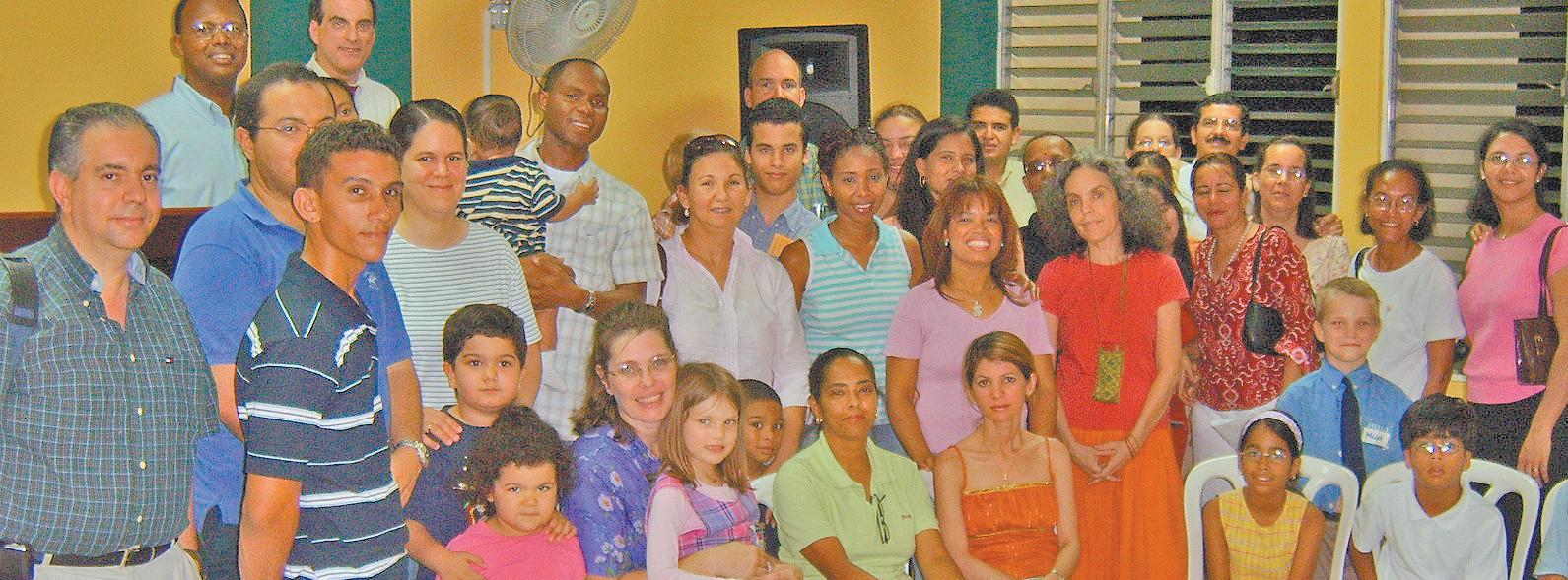
Who would revive society if everything collapsed? Homeschoolers, says a prominent educationalist.
No one is quite sure when it started. The Great Awakening, that is. Most say it was in the first decade of the 21st Century when things hit bottom and really started to unravel. Some historians cite events like General Google Motors coming out with those humanoid slave clones that revolutionised housework. Others say the Pathogen Plague of 2023, the one that wiped out 20 per cent of the globe’s population in five months.
That, of course, caused the Global Collapse, which crippled trade and prosperity. That is when we started digging our own wells and having our own vegetable gardens. But, on the other hand, the plague did stop WIAR [the War of Islam Against the Rest] cold in its tracks. They say the terrorists’ mad fever to “kill the White Satan” simply burned itself out. I was in junior high then and wasn’t really paying much attention. What I remember most is losing cable TV.
But these events still don’t explain the Great Awakening to me. For instance, instead of breaking down into warring communities and going back to a tooth-and-claw existence as so many pundits predicted, people took a very different path. Perhaps it was exhaustion, but we seemed to stay calm. Part of it was that we had pretty much lost complete faith in our political leaders’ and their “return to the land of milk and honey” promises and big solutions. This time people just didn’t go for their pledges of womb-to-tomb welfare, our own personal slaves, free Nirvana pills and a return to my beloved 300 channel cable TV. Somehow, people just didn’t go for it.
In the years since, researchers have struggled to come up with theories about the origins of the Great Awakening, theories from the Social Fragmentation Paradigm to the Sheer Exhaustion Thesis. It wasn’t until recently that scholarly opinion began to crystallise around the Homer Theory, the theory that the true cause of the Great Awakening was a relatively small number of early 21st century families that homeschooled their children and started a below-the-radar social revolution.
I was very young then, but I can remember hearing about kids who were homeschooled. Back then, they were considered vaguely odd and viewed with some suspicion. “Cultish” was a word that was used a lot. Characteristically, the media dubbed them as “Homers,” taking off on a popular early century cartoon character, Homer Simpson.Every once in a while there would be a TV special or feature article on the Homers, about their odd lifestyle and end with concern about how many
children they were having. Then there would be what seemed to be the annual story about the Homer kid that won that year’s National Spelling Bee. However, after a while the editors seemed to lose interest in the Homers and went after other curiosities.
Then a funny thing happened. Homers started showing up all over the place and getting a lot of respect. A guy at work, who I admired a great deal, turned out to have been homeschooled and he and his wife were homeschooling their six children. It turned out, too, that my son’s favorite teacher was a Homer. Then a few years ago, we discovered a network of homeschoolers in our own neighbourhood! But what was so shocking is that these Homers, in fact, weren’t very shocking at all. They were quite normal. But normal in their own way.
This is when that Homer Theory became popular. It got started after the publication of one of those huge social science surveys, dripping with statistics and authoritative findings. The study was just a description of North American social behaviour and various trends, but what stuck out were the Homers. First, there was the surprise of how many of them there were! Second, how well educated, compared to the rest of us, the Homers were and how well they have done in higher education and the professions. It was really a stunning report and people talked about it for months.
Besides getting better academic educations, Homers are happy achievers. They have better marriages, fewer divorces and personal scandals; they like their jobs more and advance more rapidly, volunteer more in their communities, have better health and, tellingly, have less need for lawyers! While the rest of us were angry and depressed about the aftermath of all the turmoil and conflict caused by the plague and the war and the terrible decline in our post-20th century standard of living, the Homers seemed unaffected by it all.
One of the most striking findings was how religious they are. For some time it had been considered bad form to talk about religion. This is particularly true of the media since we’ve been told it is a violation of ‘not imposing your values on others’… or something. But there it was: the Homers are intense churchgoers. And, not just “goers”. They bring church back into their homes with family prayer and grace before meals and religious icons on the walls. We found it all quite extraordinary.
Some of the other findings were even more shocking. Almost all of the Homers have TV sets, but they don’t watch much TV. Certainly not like the average seven hour-a-day viewing by most Americans. Later research reveals that this abnormally low TV viewing is part of a larger Homer factor, a deep distrust of so much of the media content. Homer parents take it all very seriously. They want to be sure
about what their children are watching. When this finding was made public, there was a huge outcry about thought-control, children’s rights and stunting the cultural literacy of Homer kids. I asked my Homer friend at work why they limited their kids’ education so. What he said was really shocking. “Our primary job is to protect the hearts and minds of our children.” They watch movies, use the internet and read all sorts of books, but until the kids are older, the parents are busy monitoring what they watch and read.
But then there was the big scandal. Editors from the New York Times and the LA Times sent a clandestine team of reporters to infiltrate heavily Homer-impacted communities. The reporters remained embedded for six months. Later, they went to universities posing as Homers in order to get close to Homer kids. Their series, “Homers Revealed: A Cult After All!” was a blockbuster.
The reporters, their editors and papers were the consensus winners of that year’s Pulitzer Prize. At the televised award dinner, the New York Times lead reporter forgot his medication and instead had three martinis. When he got up to make his acceptance speech, he started out and then stopped. He started again, but suddenly broke down, and before a bewildered audience and the world watching on television, he blurted out that the whole thing was a setup. The public outcry was loud and immediate. In disgrace, the LA Times stopped its presses and closed it doors. The New York Times tried to tough it out, but within eighteen months it was a give-away newspaper. Oh well, they didn’t have much to offer anyway after Google merged with Amazon.
“Character,” which had sunk to be one of the trendy, psychobabble words when I was in school, is now back, too. Now, though, character is about virtues and vices, good and bad habits. I even heard someone on a quiz show the other night who knew the four cardinal virtues: prudence, justice, fortitude and the other one I always forgot. I’m told this is all part of “natural law” thinking, which apparently is making a big comeback. The last time I heard about natural law was my father telling me about the trial or hearing for the first Black Supreme Court Justice back in the 20th Century. Apparently he was accused, or something, of practising “natural law.” Anyway, he’s said to have turned out to be a pretty good judge.
I’m not sure just how much credit the Homers should get for the Great Awakening and our return to social sanity. A guy I know says it’s just the natural resilience of the human spirit. But things sure are looking better these days. Crime is down. Business is coming back. Churches are being built or reconverted back from restaurants. Homers may not be the entire solution, but they sure seemed to be a good part of it. Oh, and I heard last week that my only grandchild has become a Homer and he and the wife go to church now. Who would have known?
Kevin Ryan founded the Centre for the Advancement of Ethics and Character at Boston University, where he is professor emeritus; written and edited 20 books; appeared recently on CBS’s “This Morning”, ABC’s “Good Morning America”, “The O’Reilly Factor”, CNN and the Public Broadcasting System speaking on character education. Reach him at kryan@bu.edu.
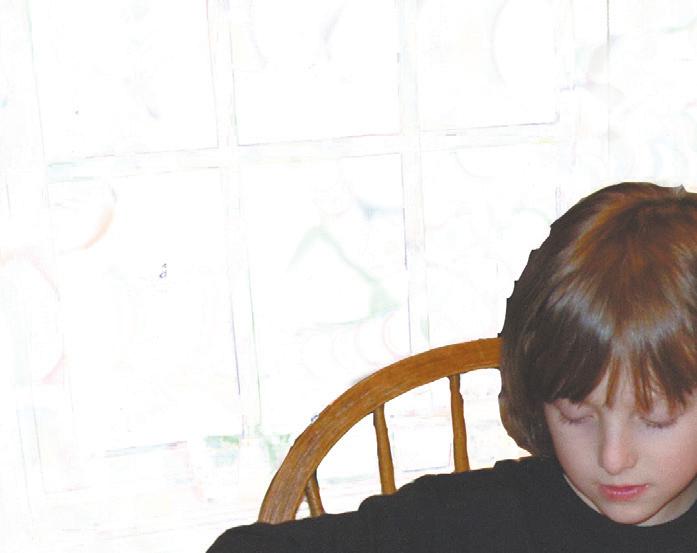
There does, however, seem to be another important and lasting impact of all this recent attention to Homers. It seems to be changing the way we all talk about things. The terms “good” and especially “evil” are back. So are “soul” and “truth” and “beauty”.
